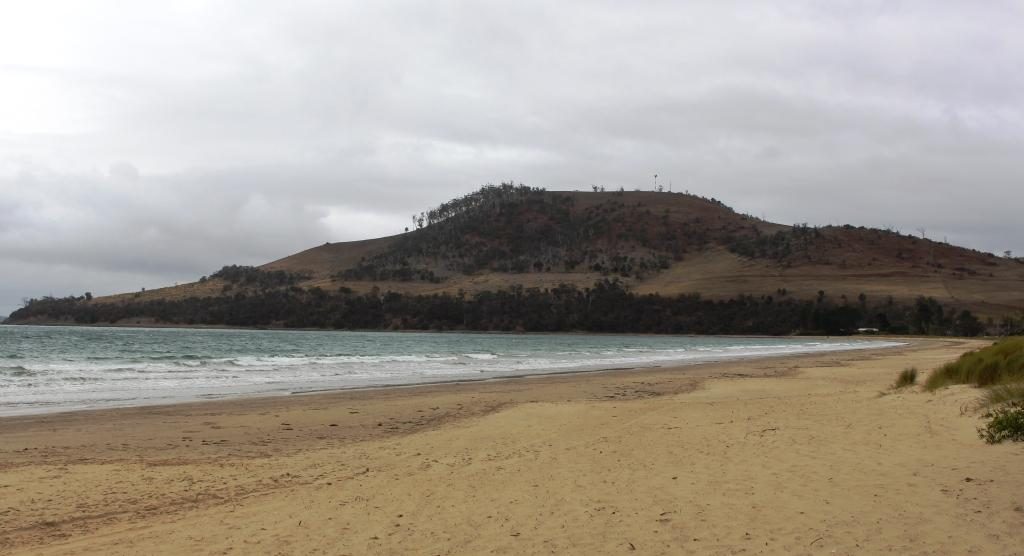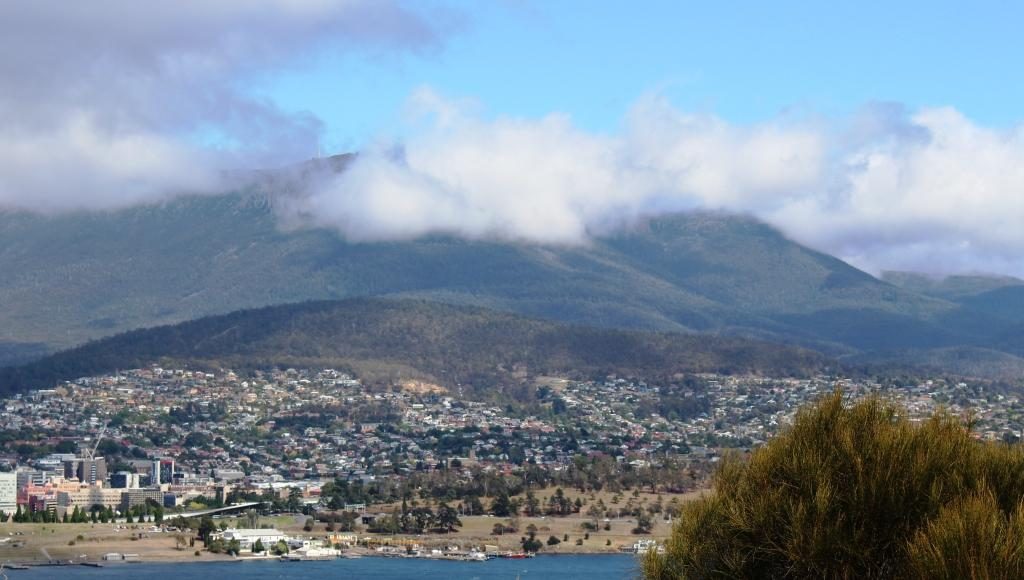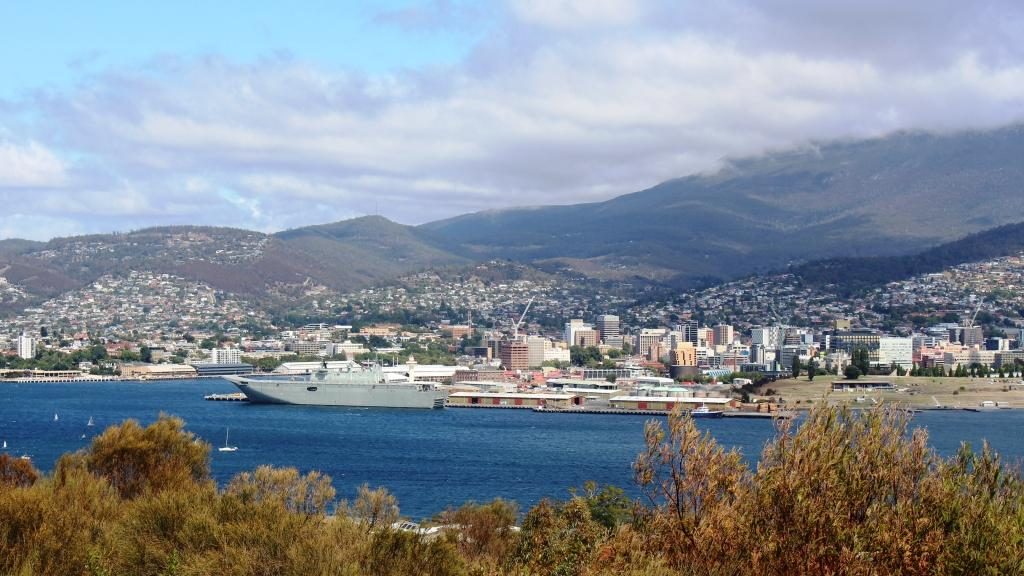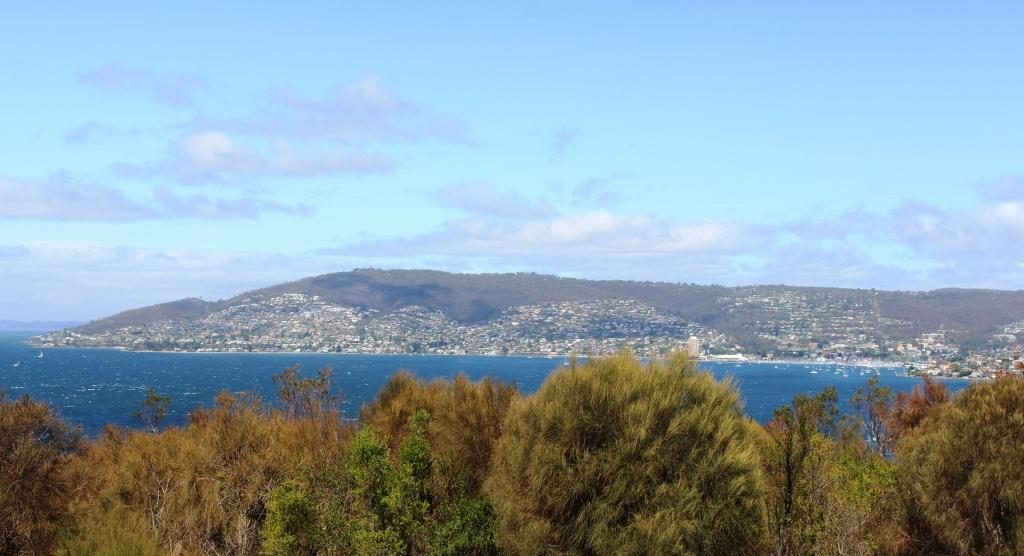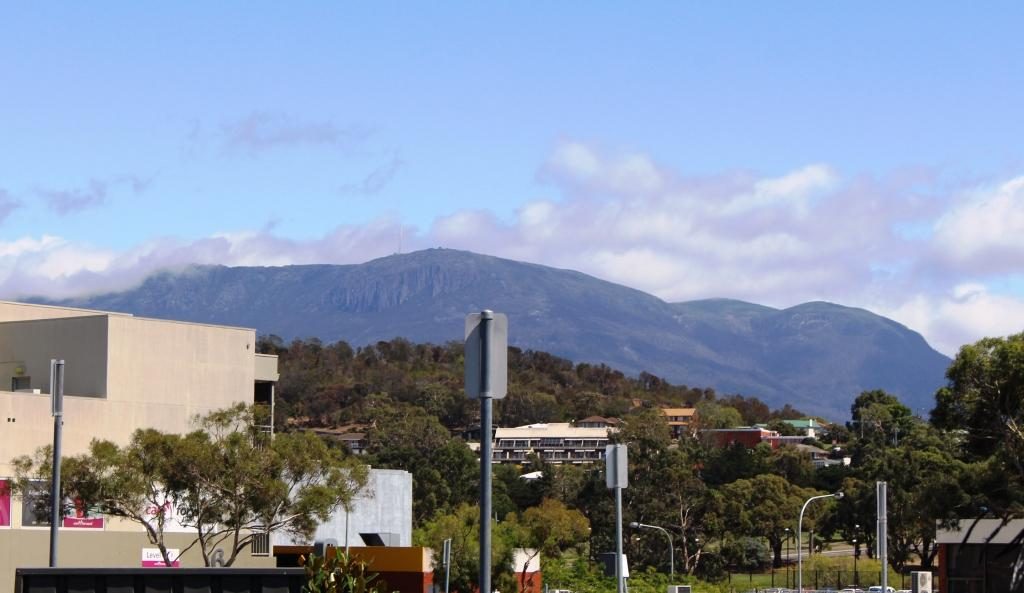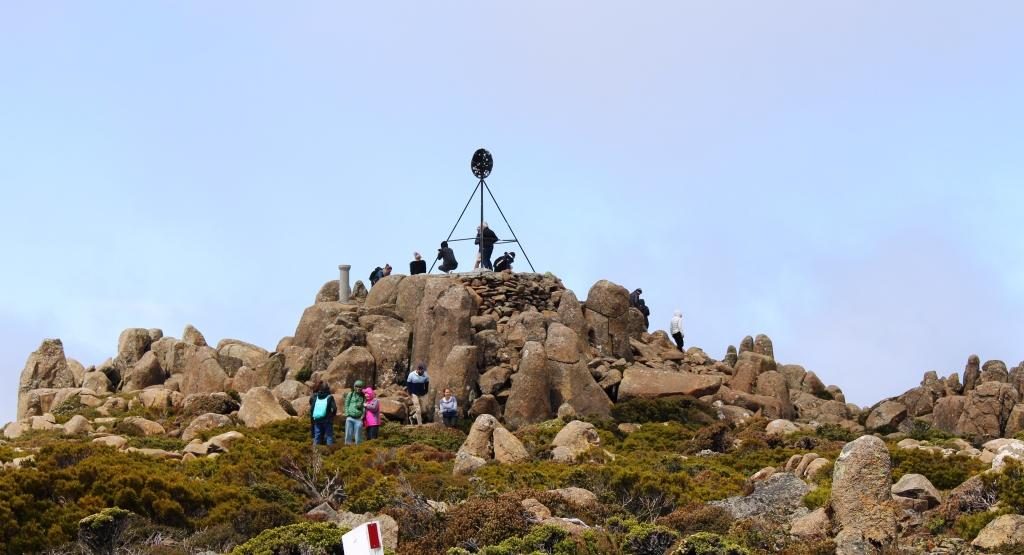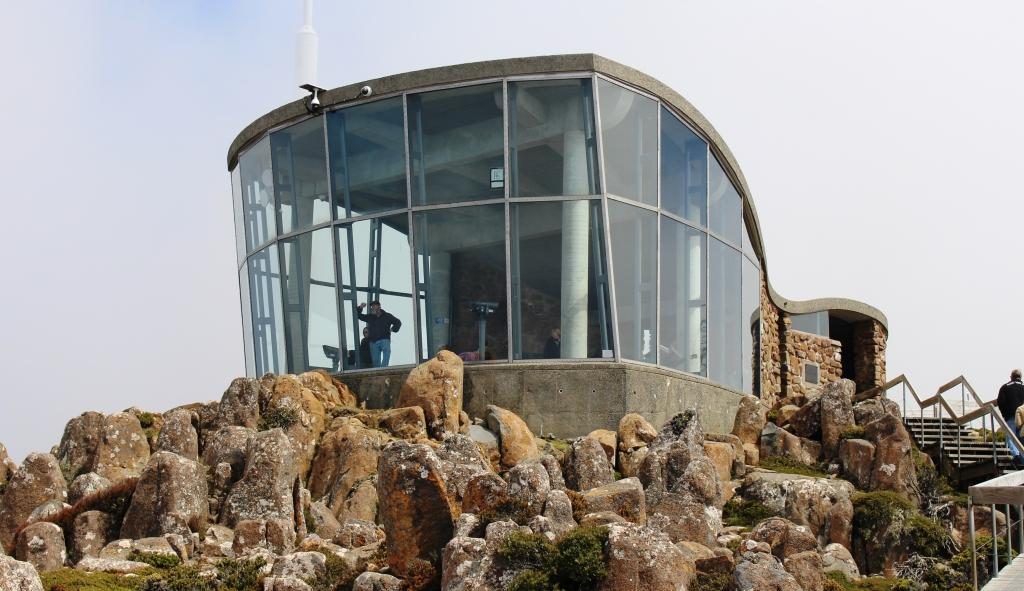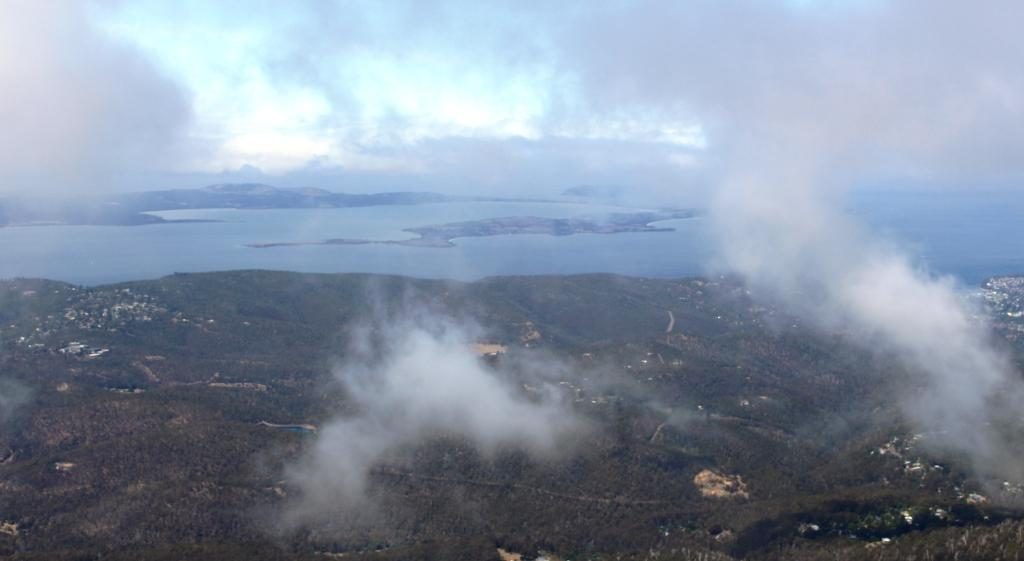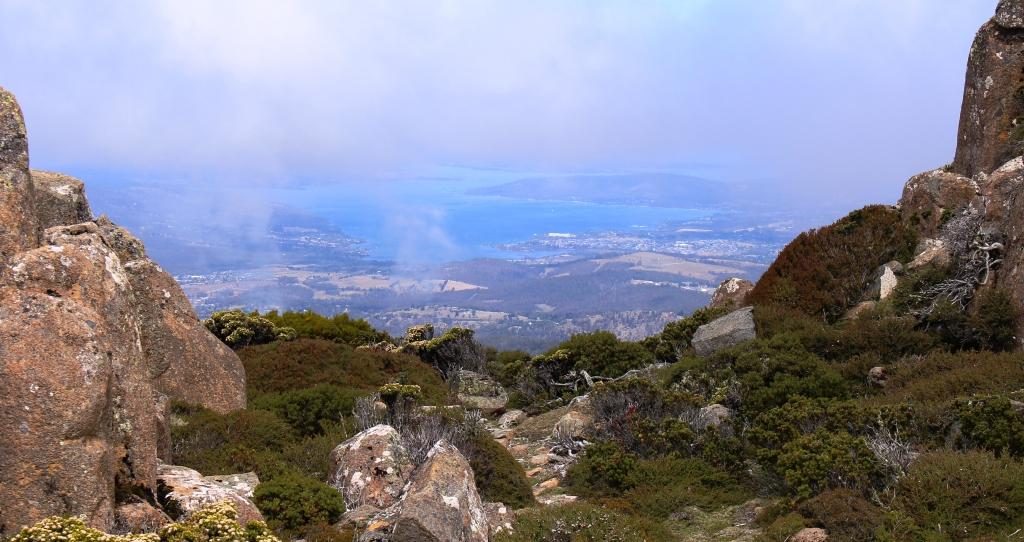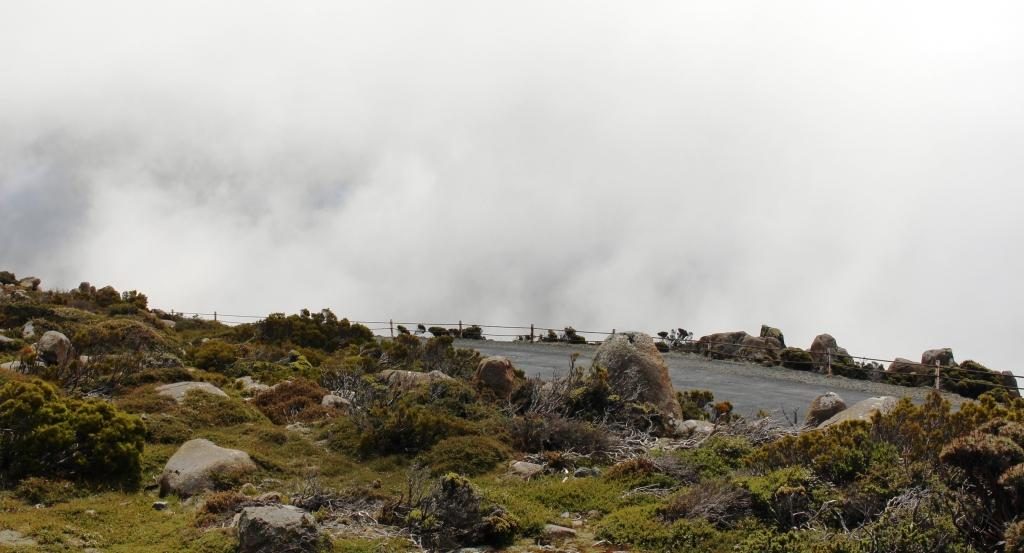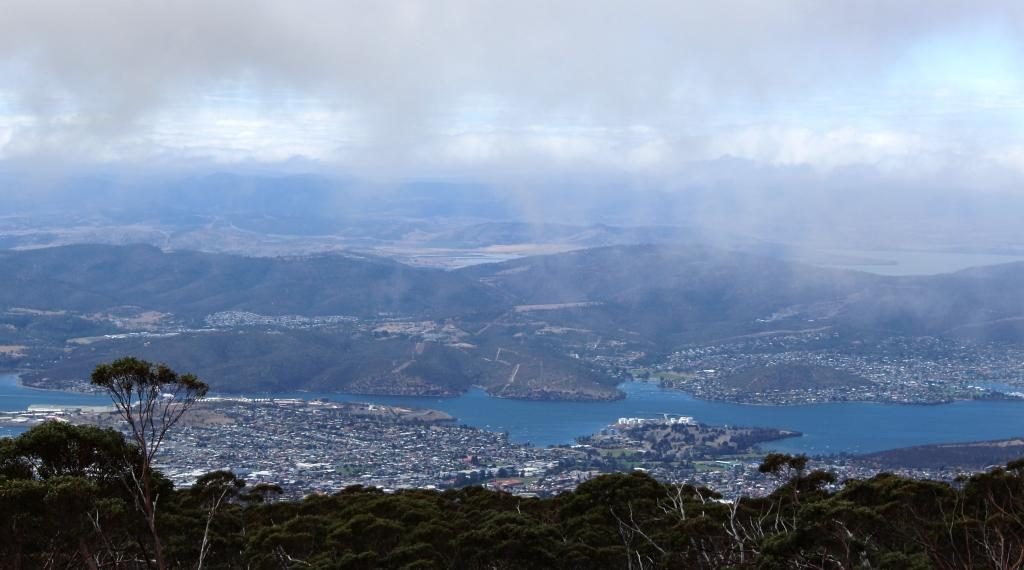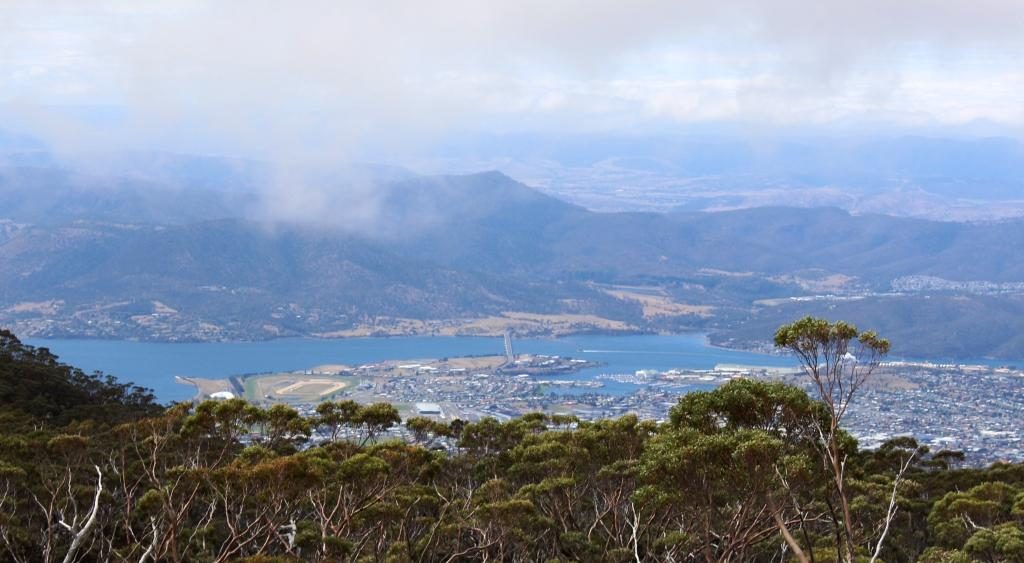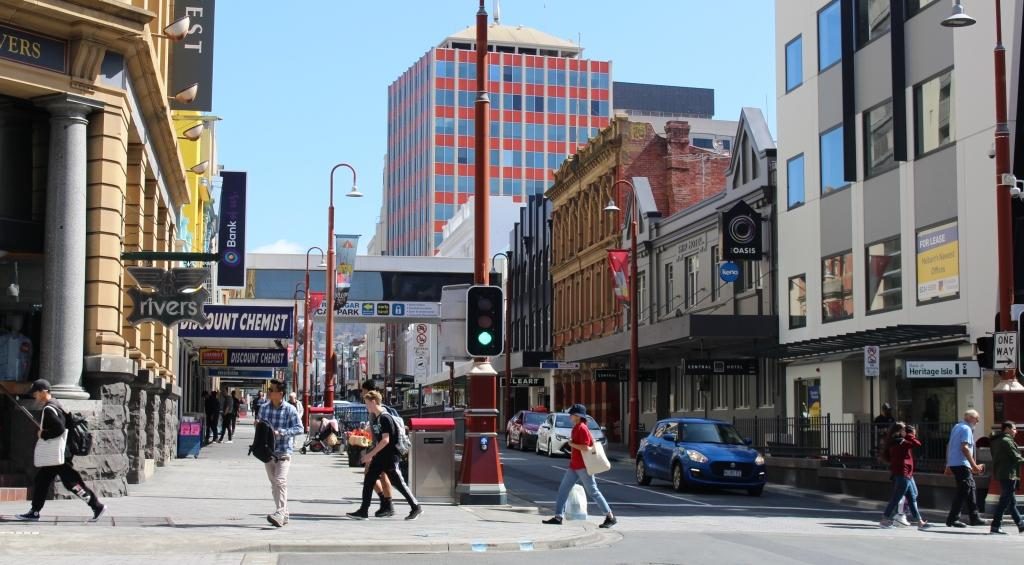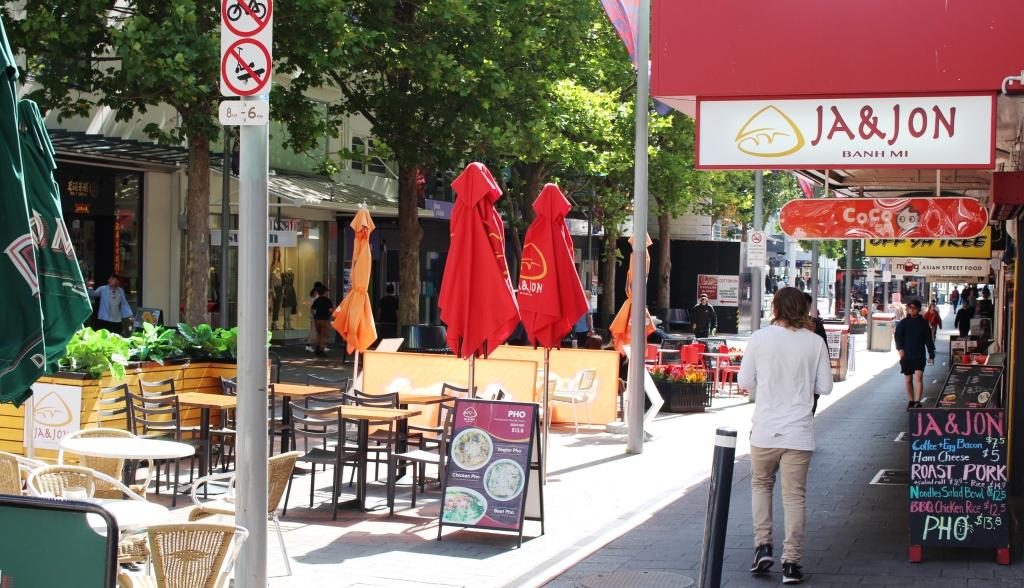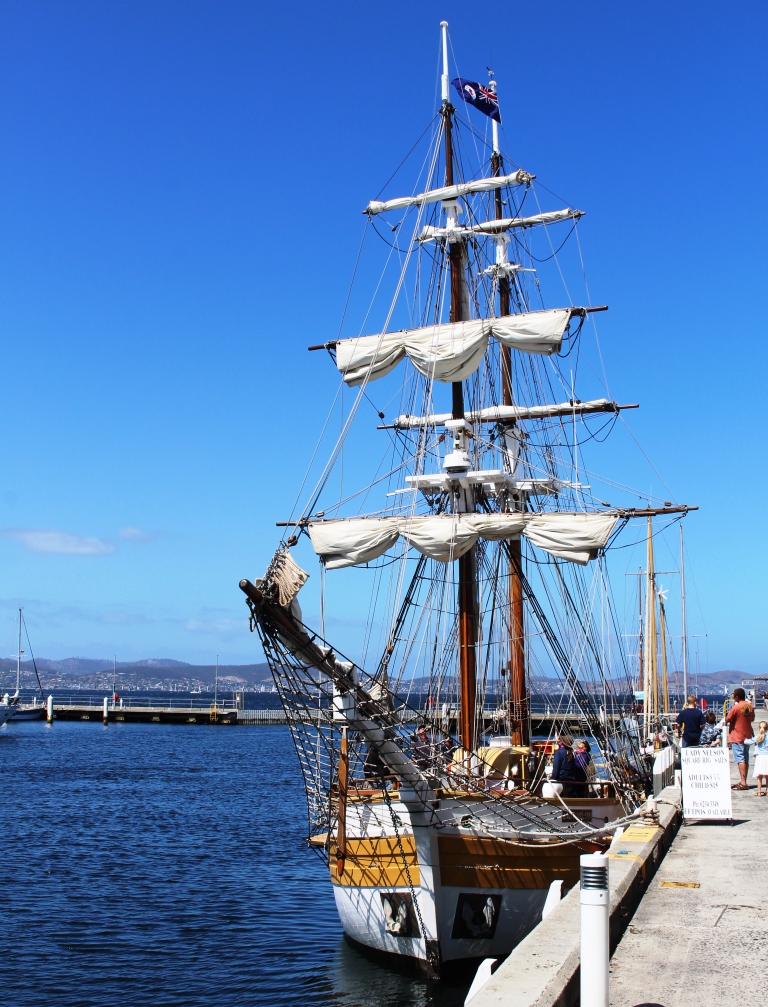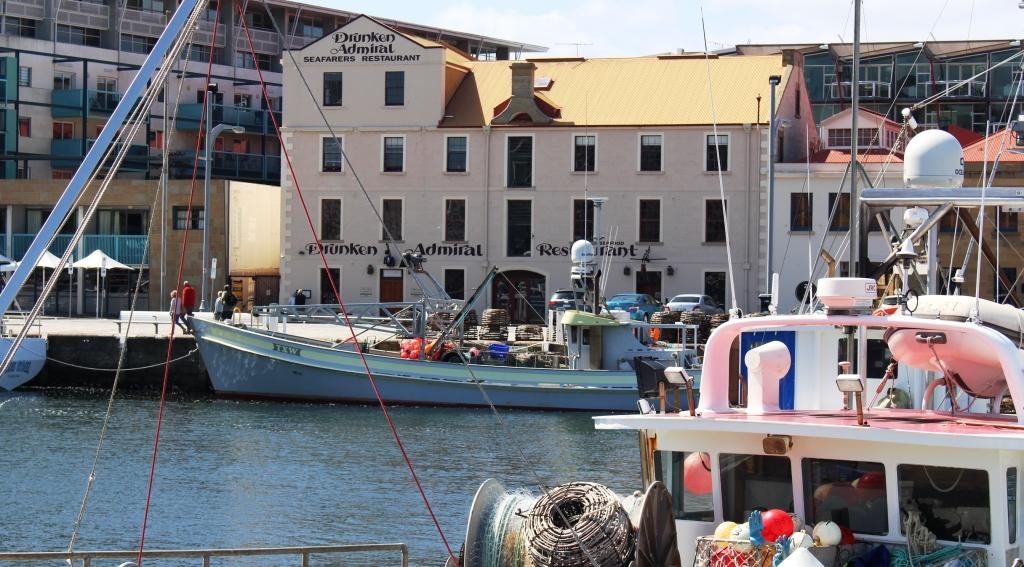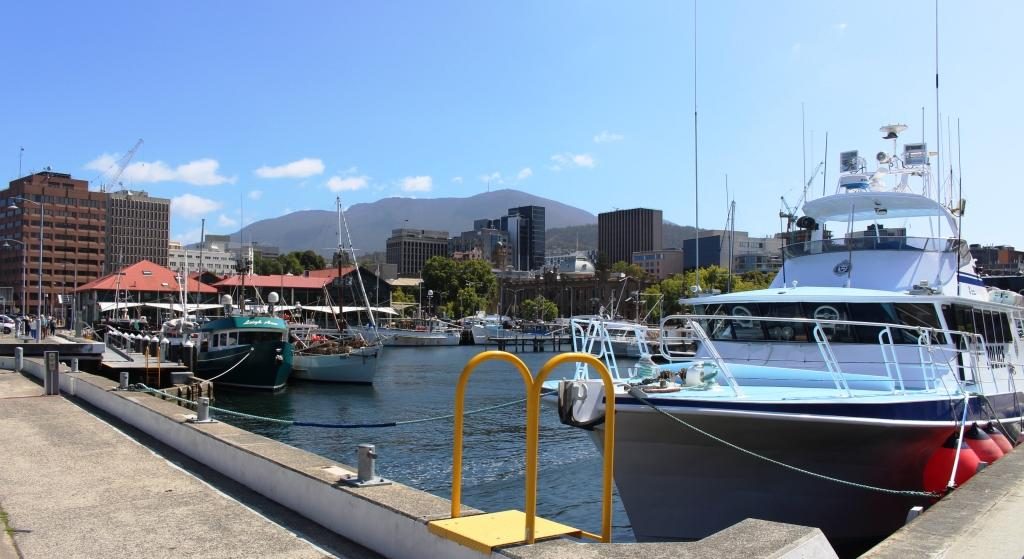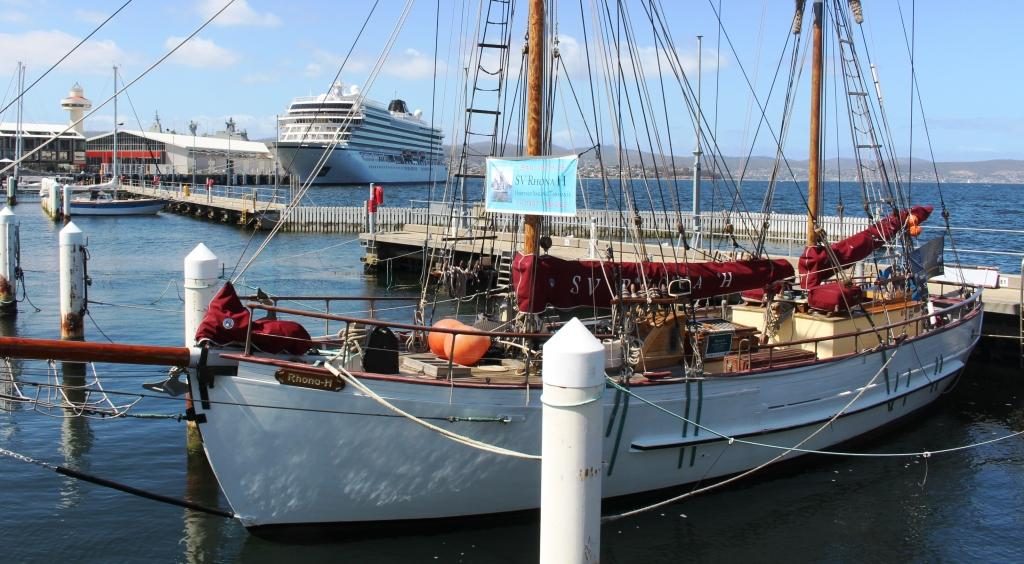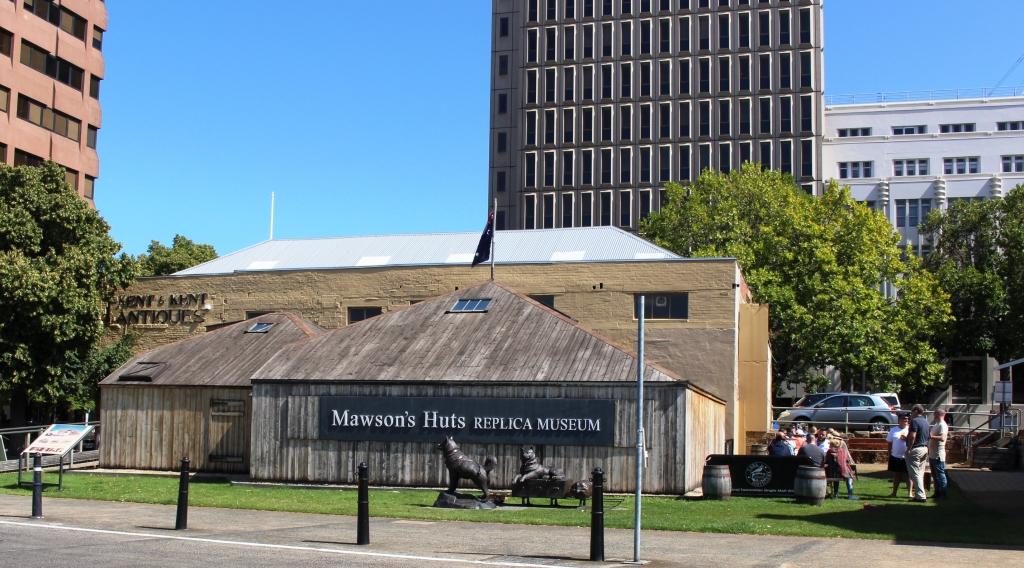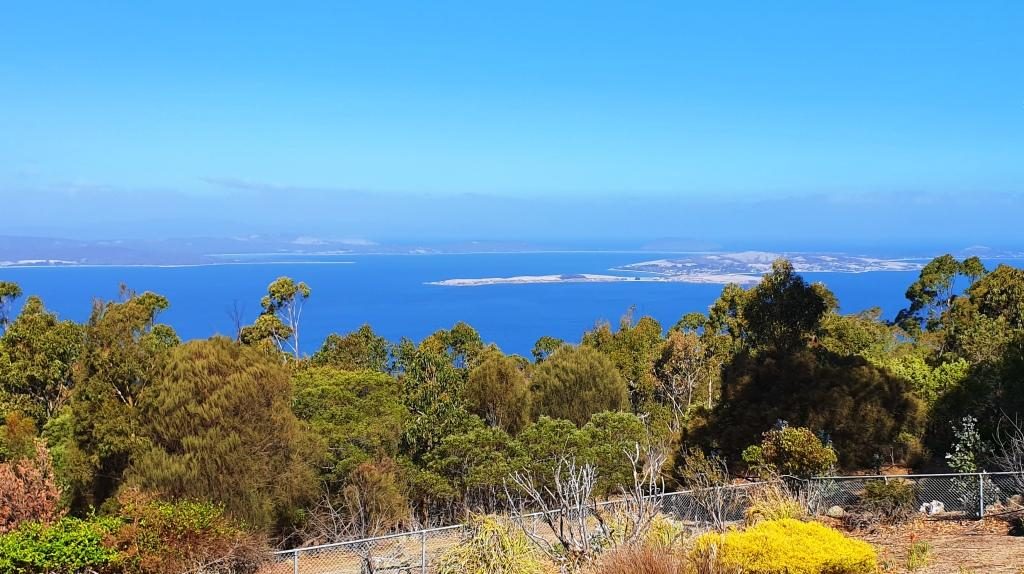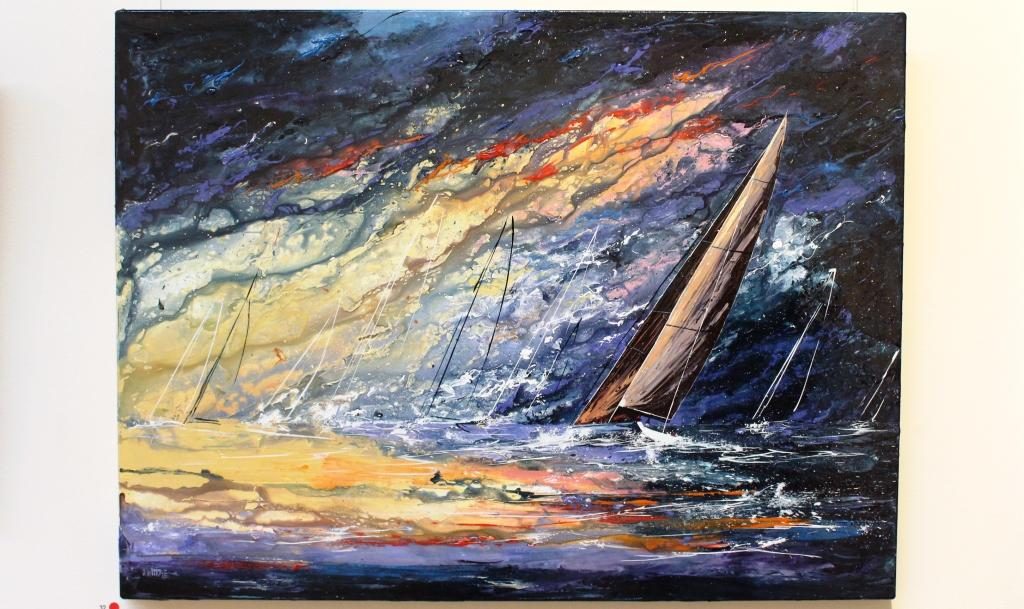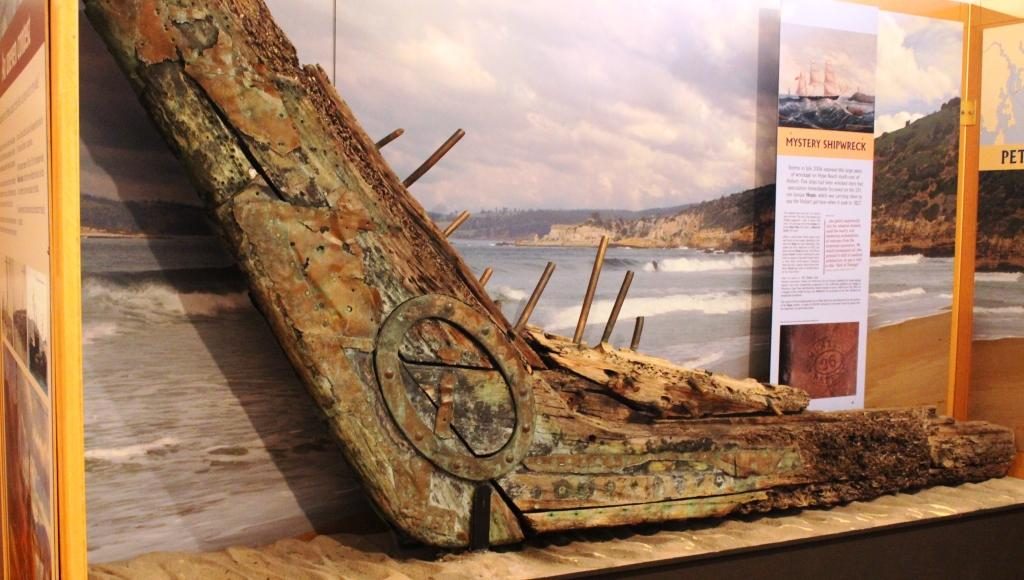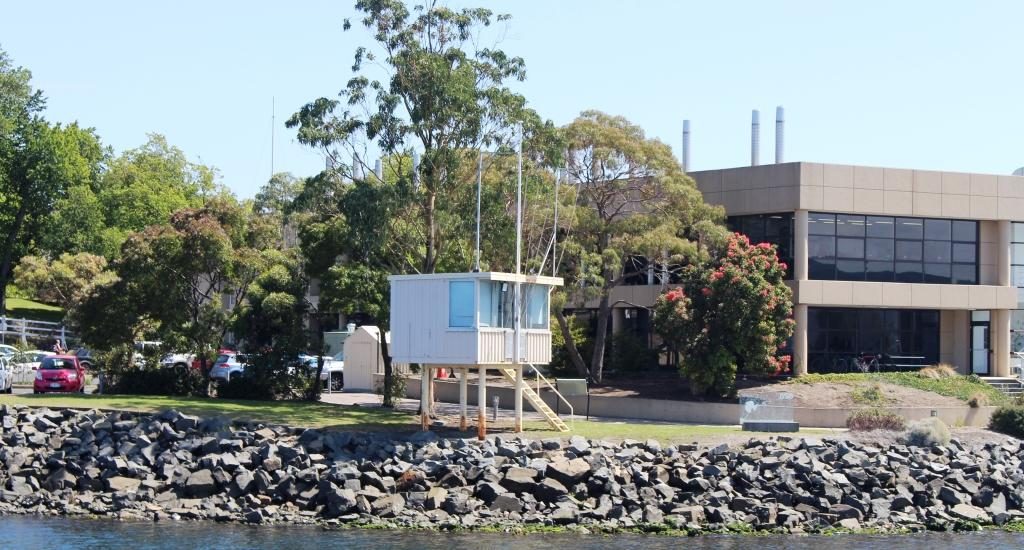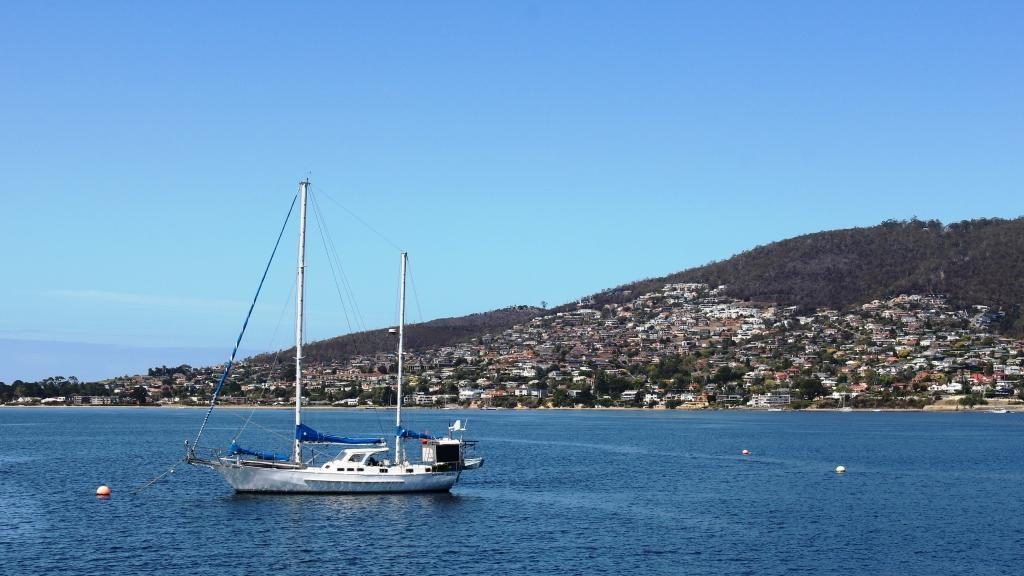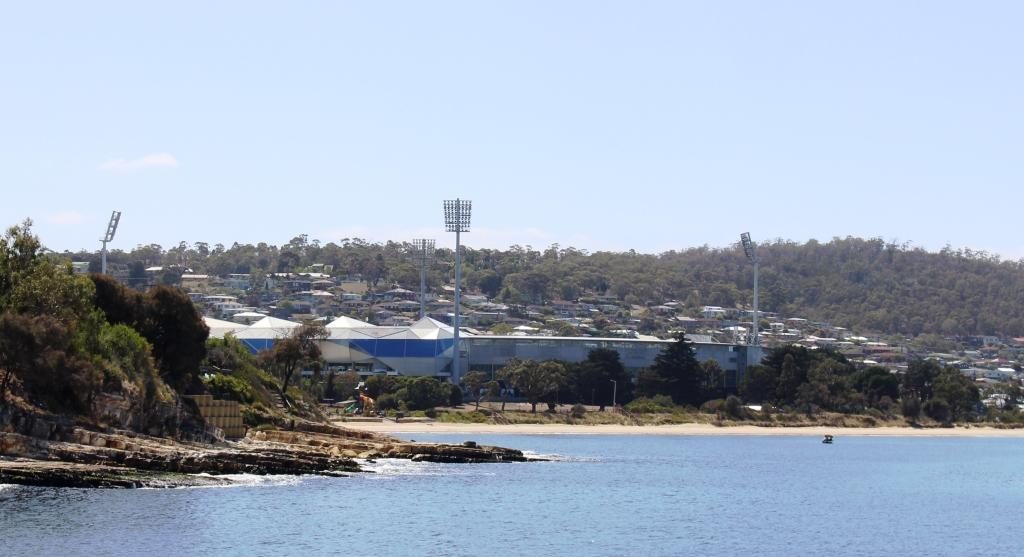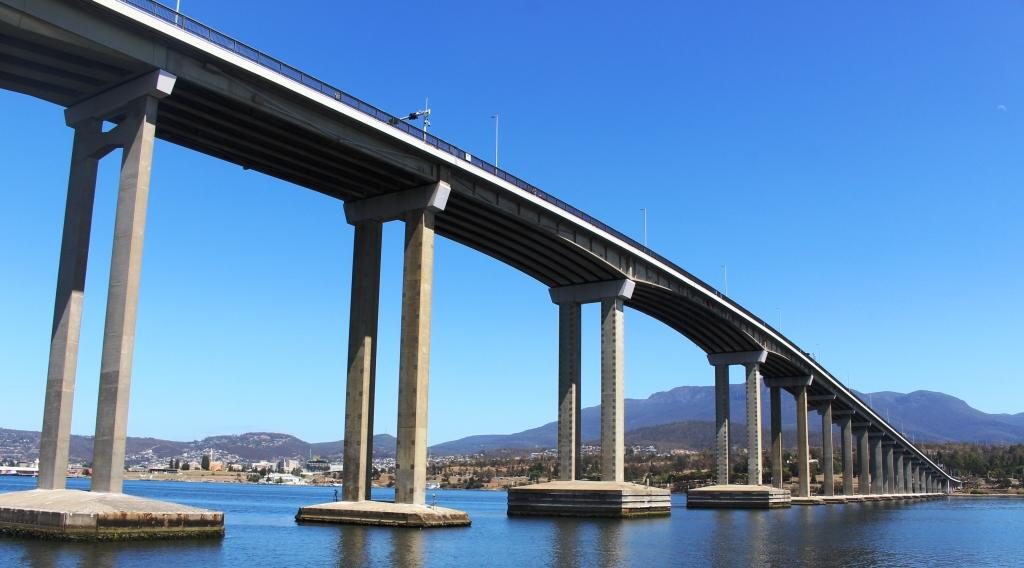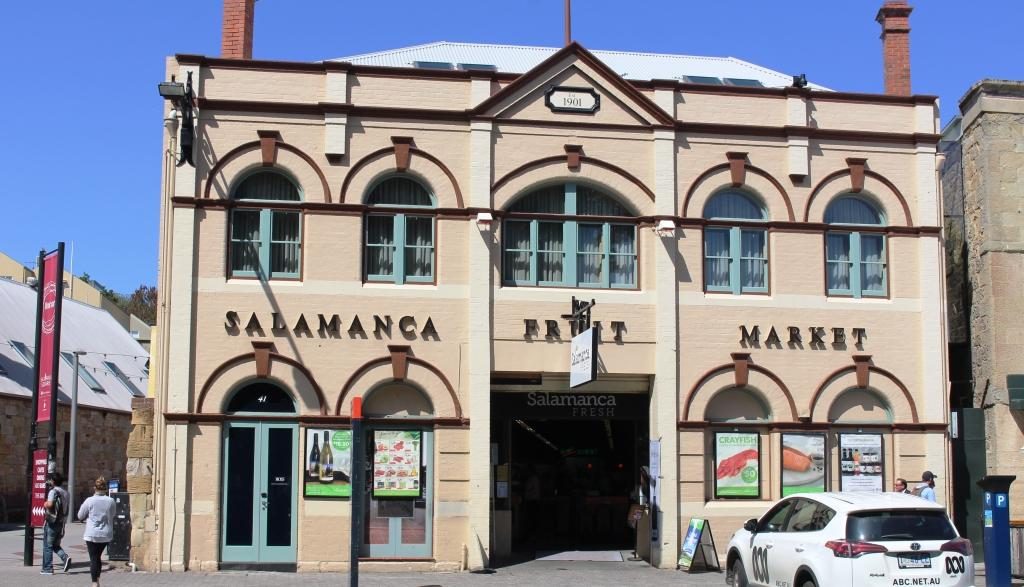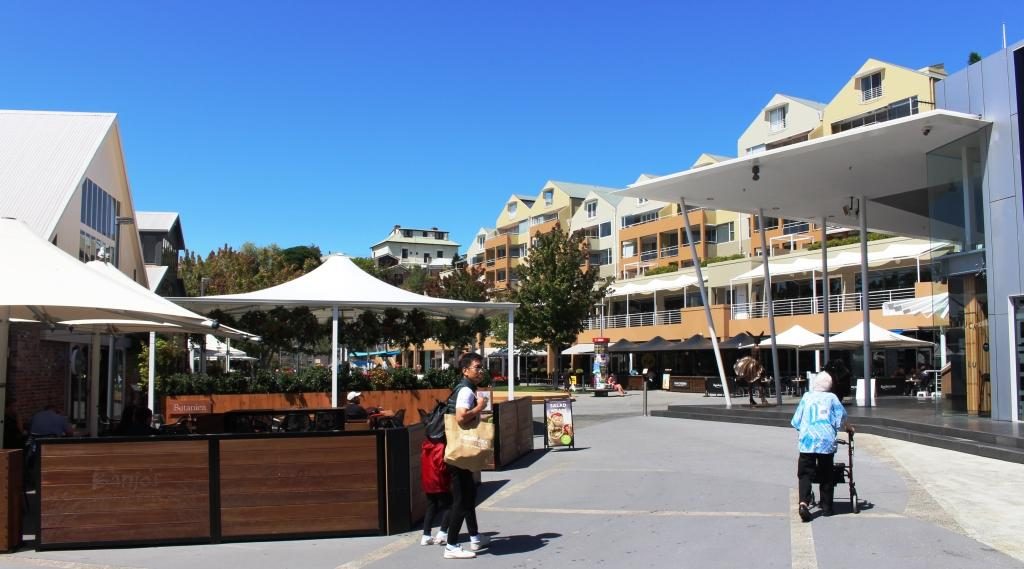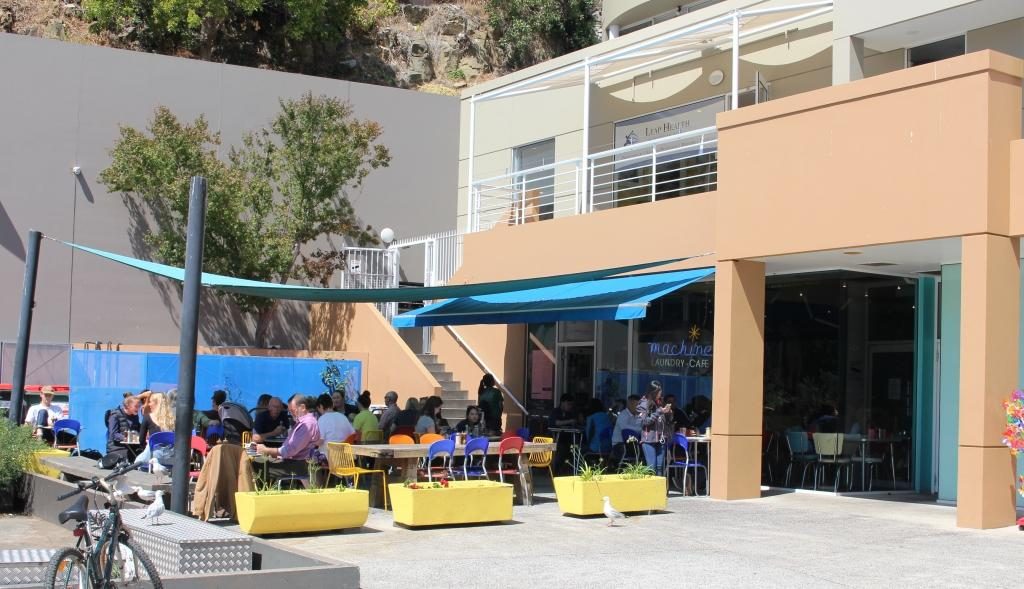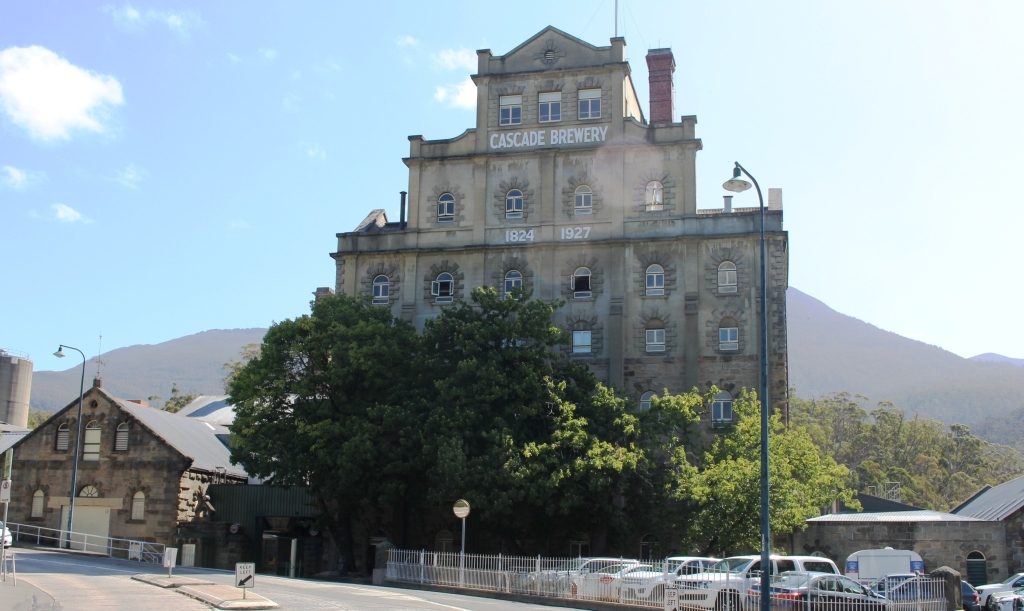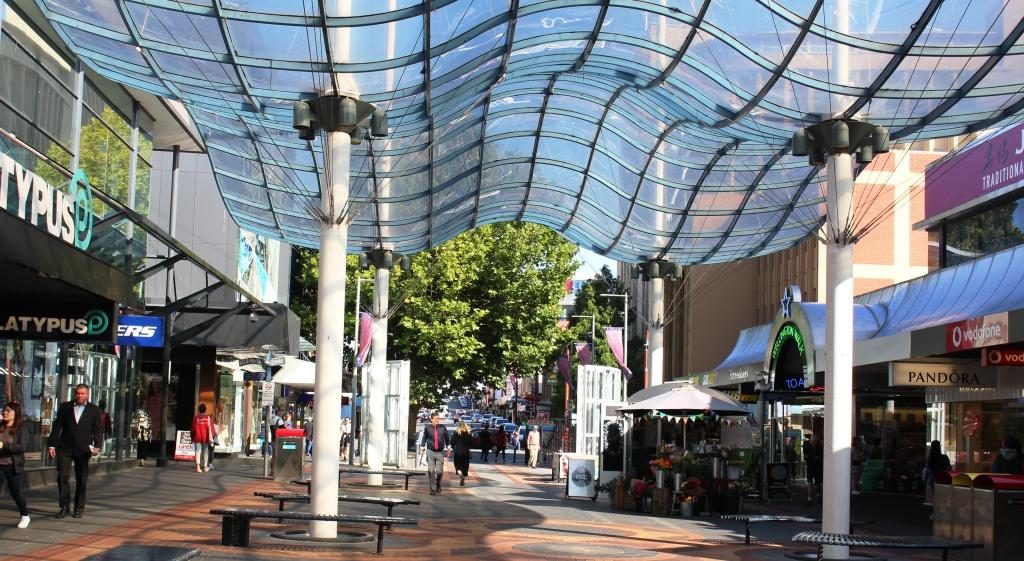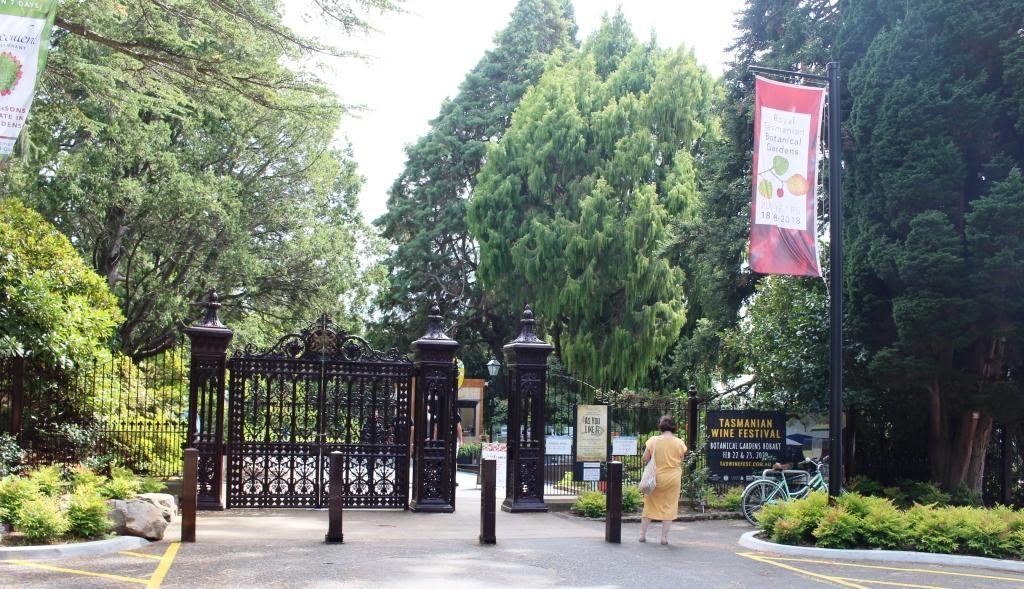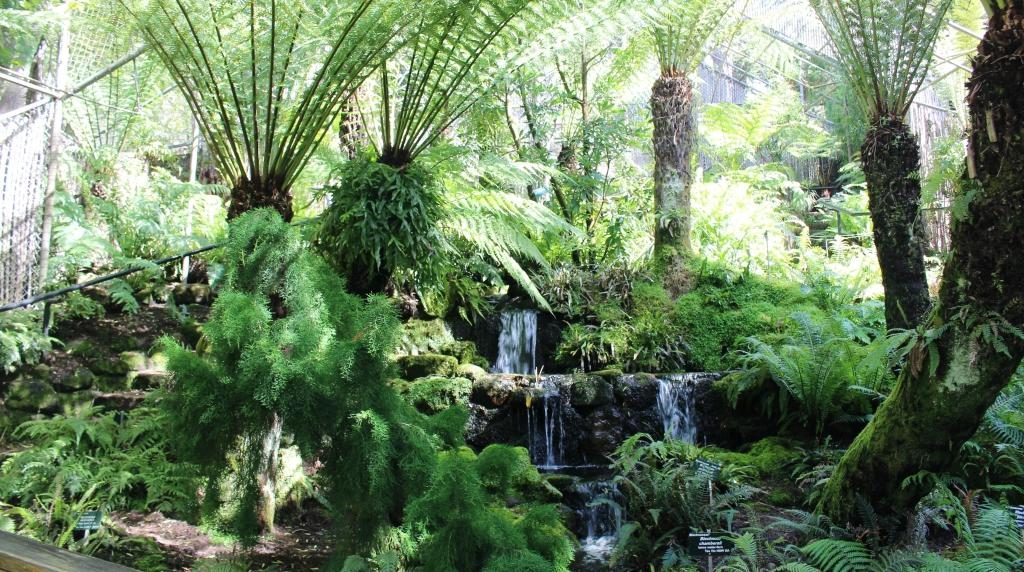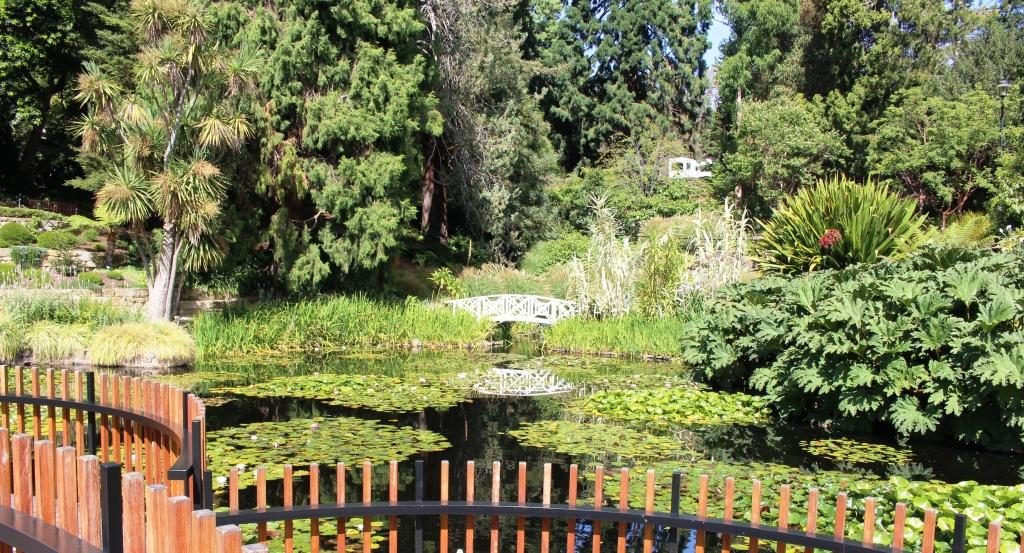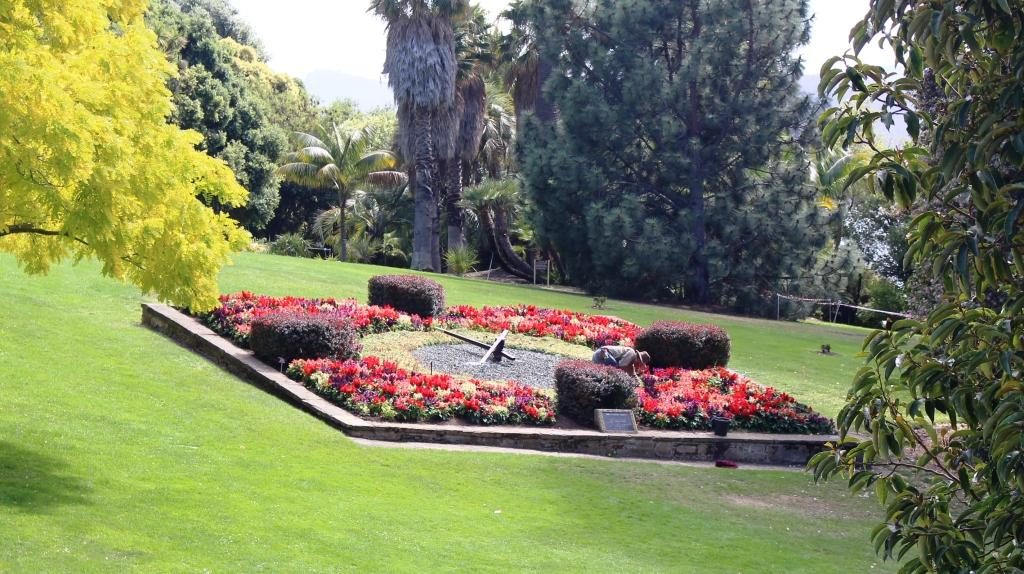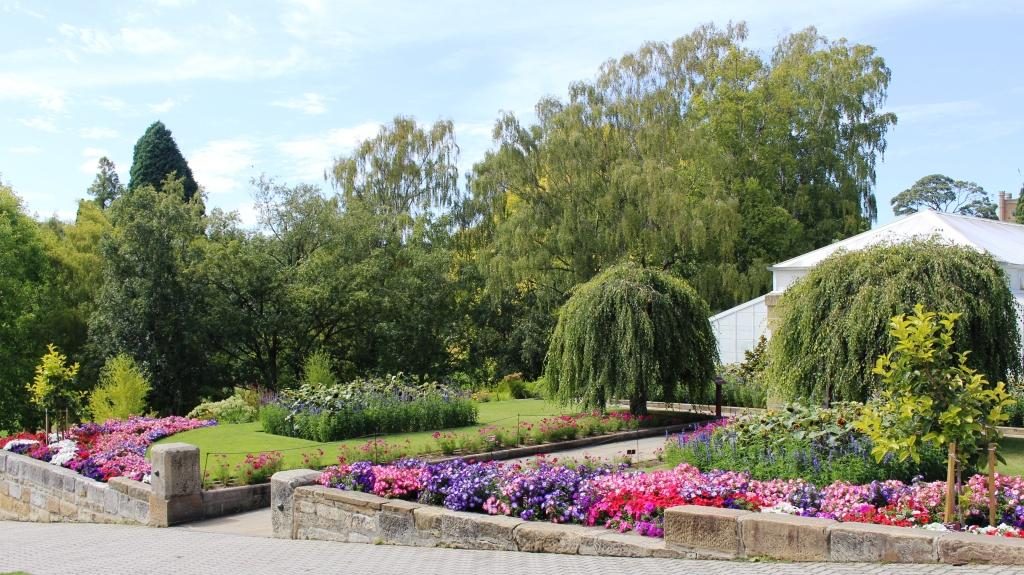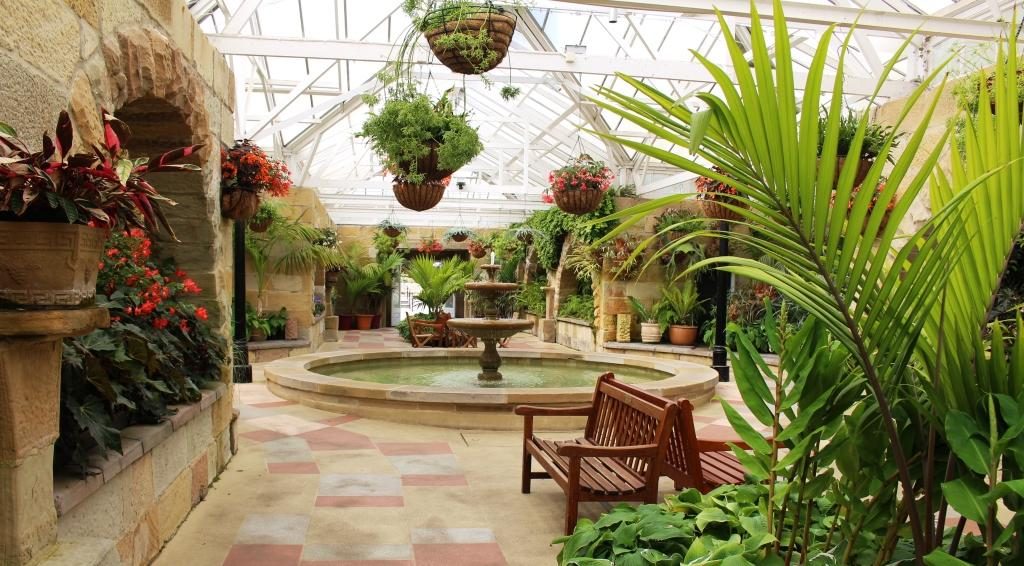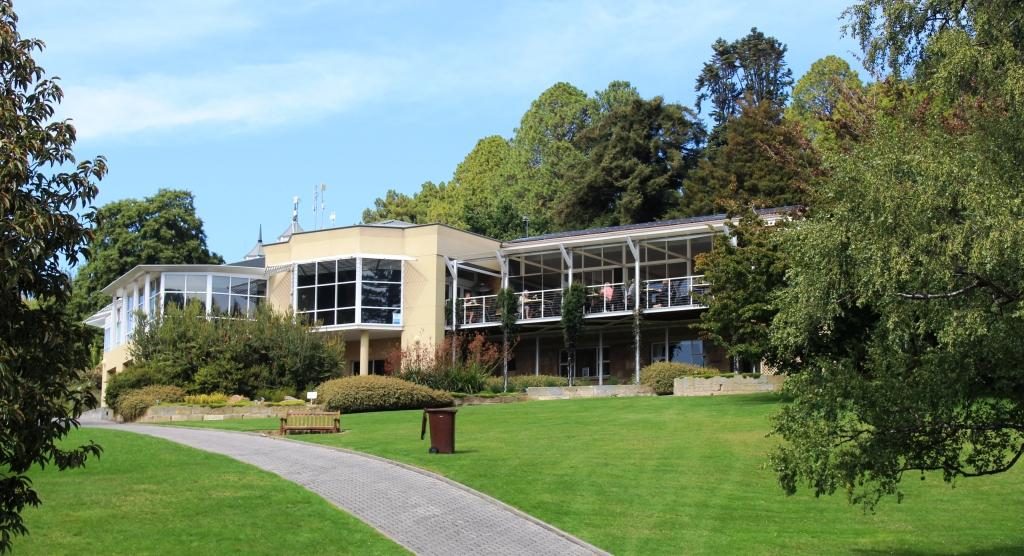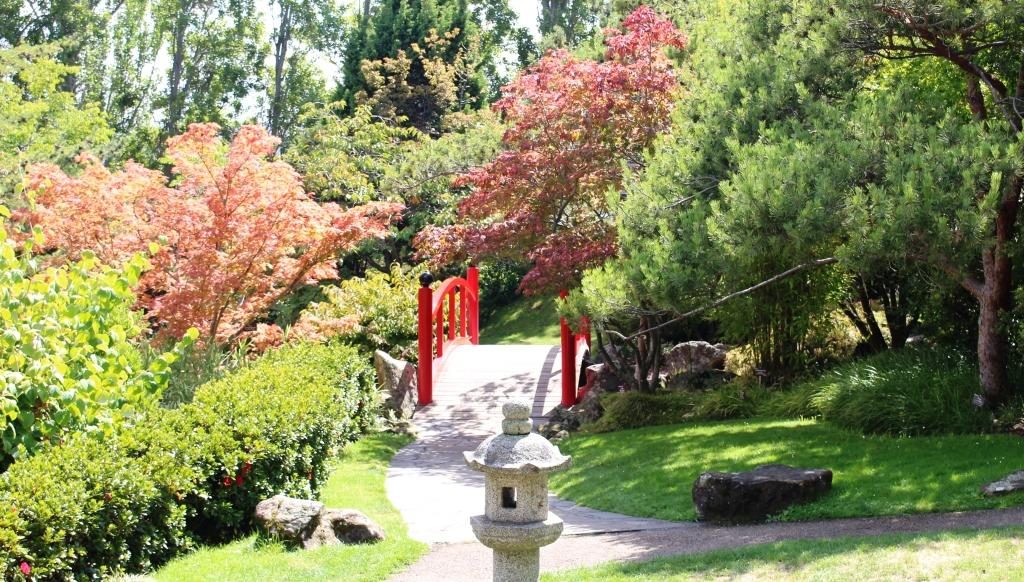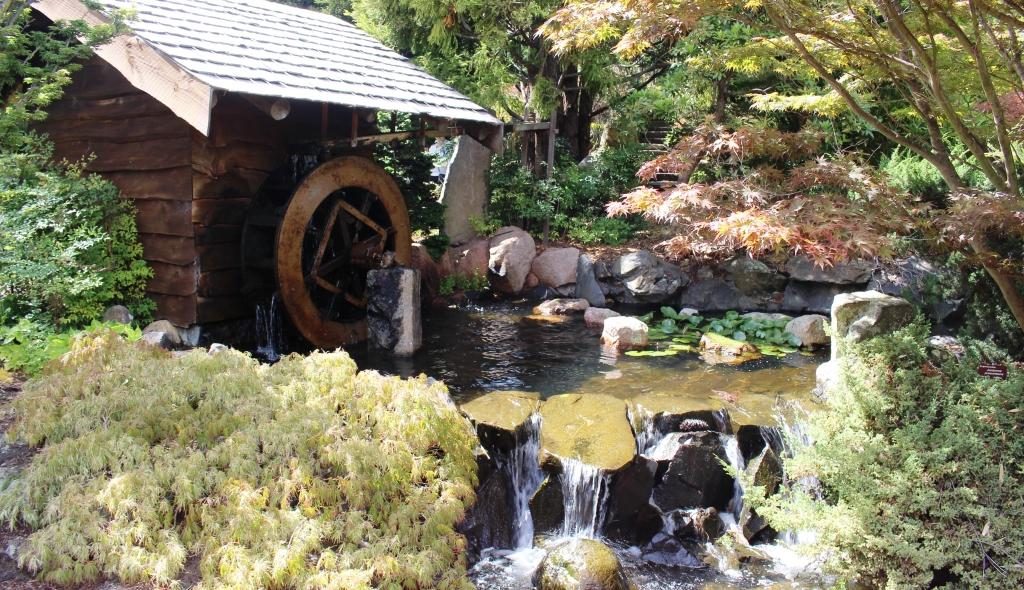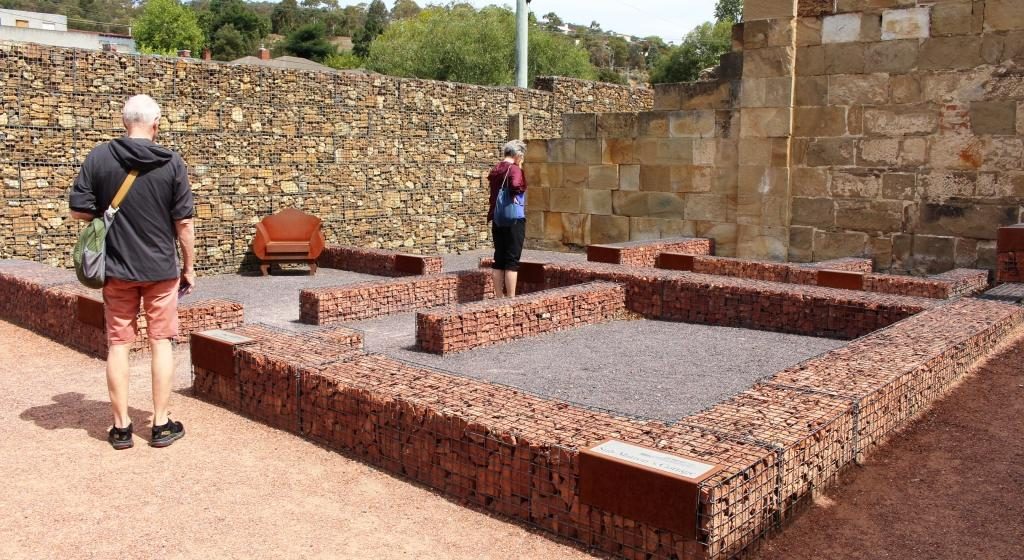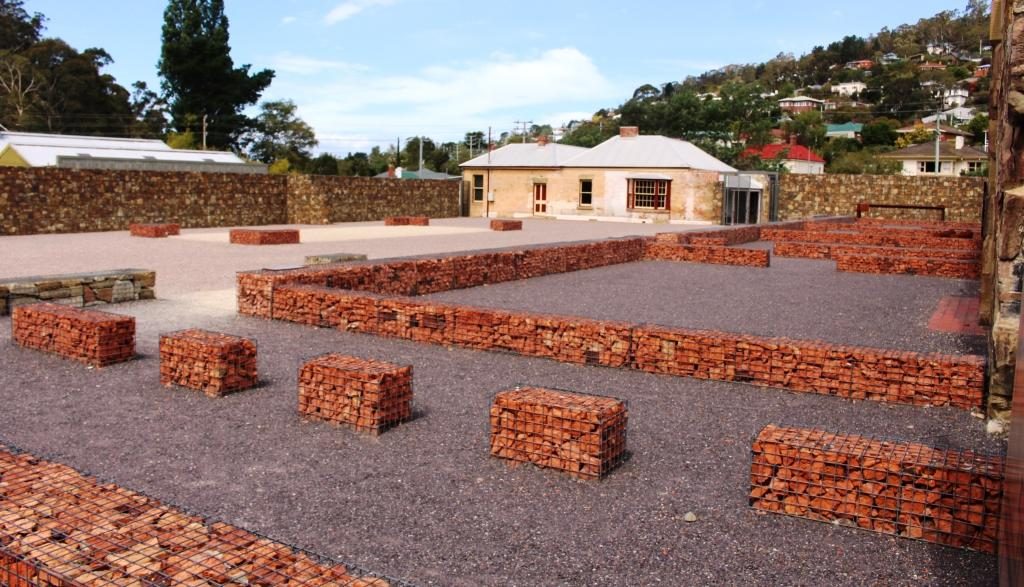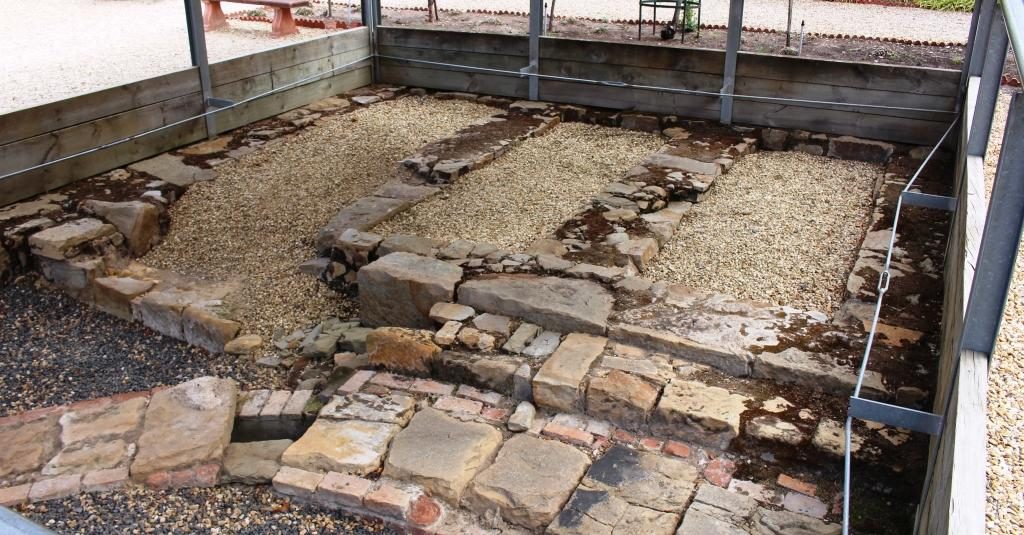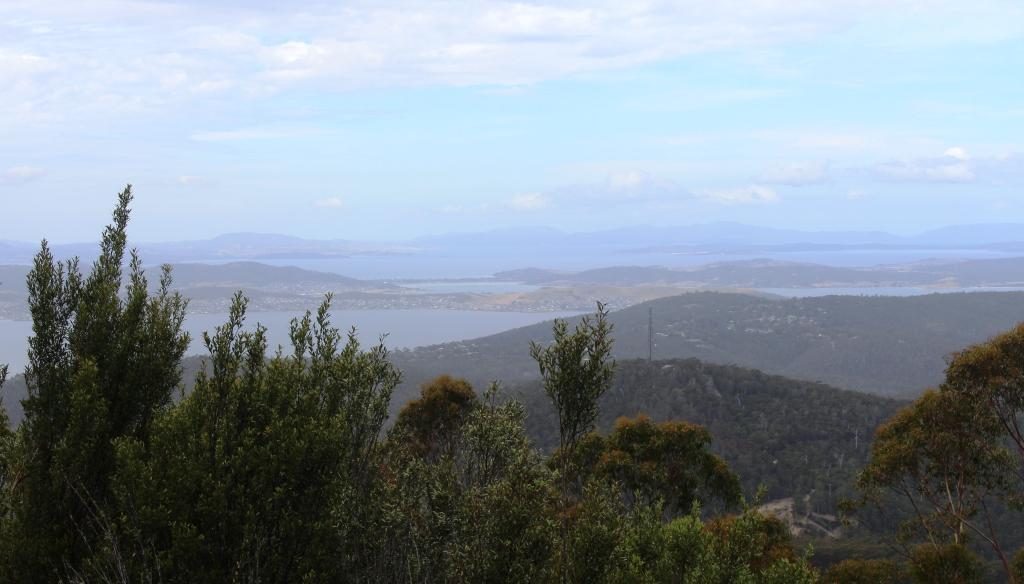21st & 22nd February 2020
Please Note: A video covering the material in tis blog post can be found at the bottom of this post.
Tasmania got rid of most of their trains many years ago. Only limited goods services remain and I am not certain that they are run by the government. But Tasmanians still seem to have an attachment to trains. You see museum and recreational railways often.

The top passenger train was the Tasman Limited. It operated between Hobart and Launceston but operations were stopped in 1978. Some enterprising people bought a complete train and set it up at the suburb of Margate, south of Hobart, as a boutique shopping centre. Original carriages have been set up as specialty shops, facing onto a covered platform.

But the scheme seems to be running out of steam. Some shops were signed to open at 8.30 am but at almost 9 o’clock no one had turned up to open up anything. There were no signs saying that it was closed but I think perhaps that particular train is experiencing its second obsolescence.
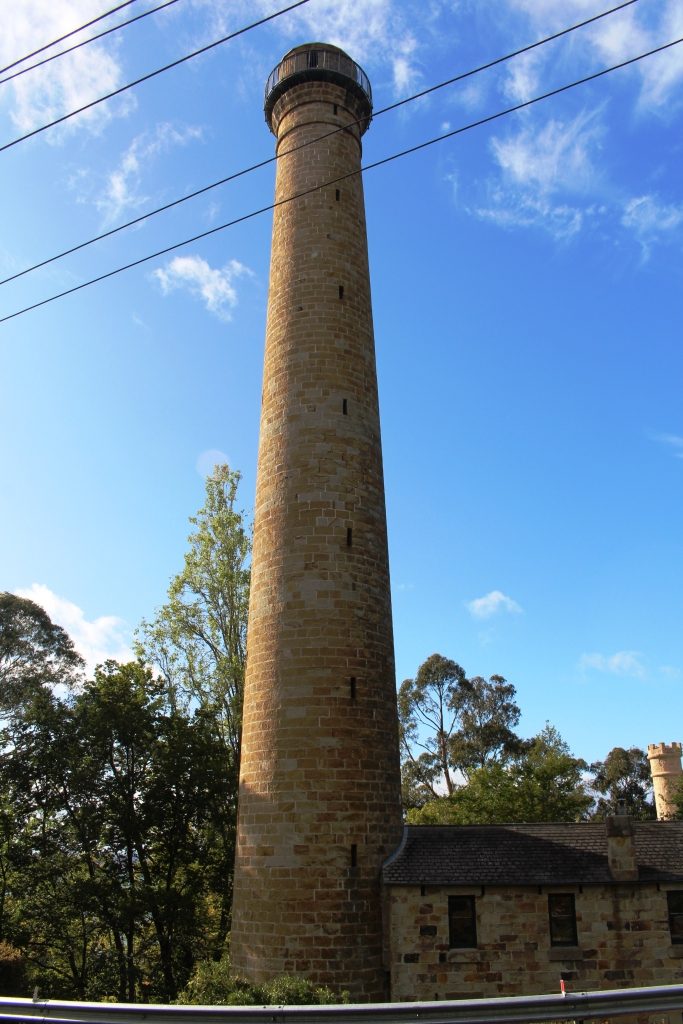
We drove on to the Shot Tower in the southern suburb of Taroona. Built in 1870 to manufacture lead shot for fire arms, it stands beside the main road, to the south. It is 58 metres high and was the tallest structure in Tasmania for 100 years.
Molten lead was carried to the top of the tower and dropped through a copper sieve. Surface tension shaped the lead particles into small balls as they fell, to be caught in a water filled cooling tank on the shot tower floor.
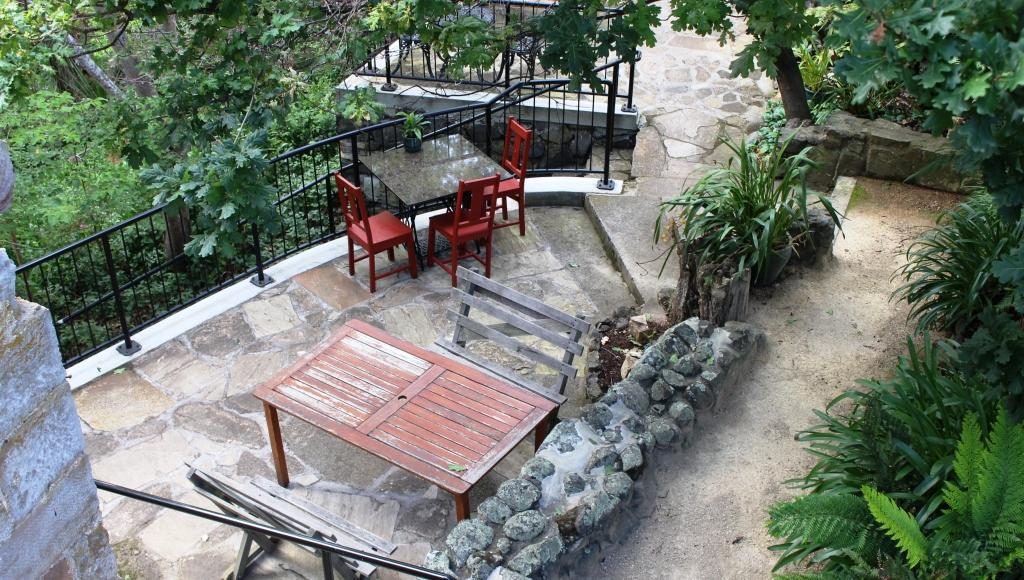
To get to the top 318 wooden steps had to be climbed. The stairway is there to this day. Visitors may climb them for a small fee for the experience and for the fine view of the lower Derwent.
We had a pleasant chat with the lady who runs the shop and with the wife of a man who was climbing it. Upon his decent he showed us his videos. The view is certainly grand. The Shot Tower has a shop that sells souvenirs as well as a coffee shop in its basement.
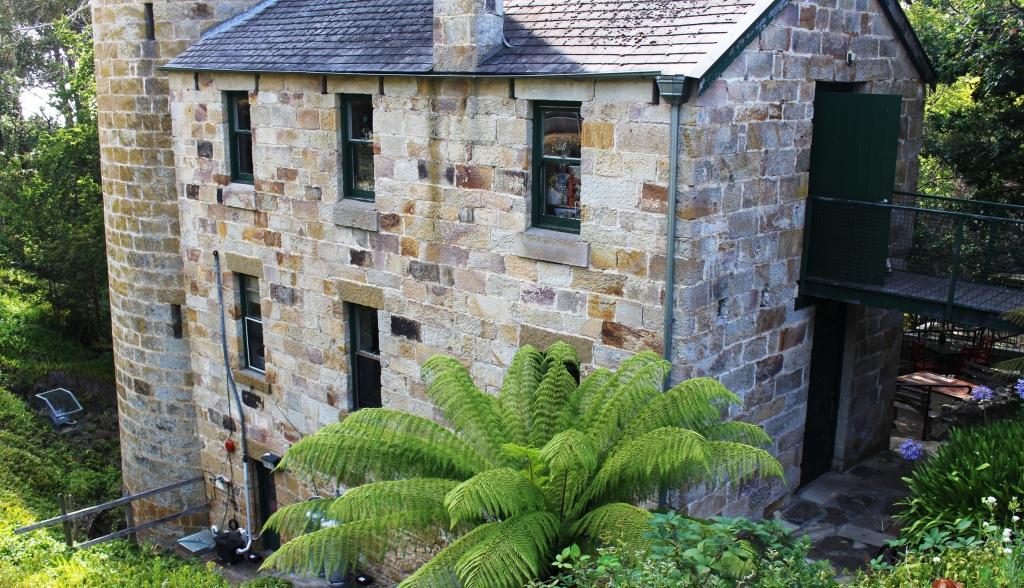
At the recommendation of the lady in the shop, as we drove on to Richmond, we detoured to the sight of the Alexandra Battery near Wrest Point Casino. It provided excellent views without needing to climb over 300 steps. Alexandra Battery was one of the many built around the Australian coast during the late 1800s when it was feared that the Russians would invade Australia’s east coast.
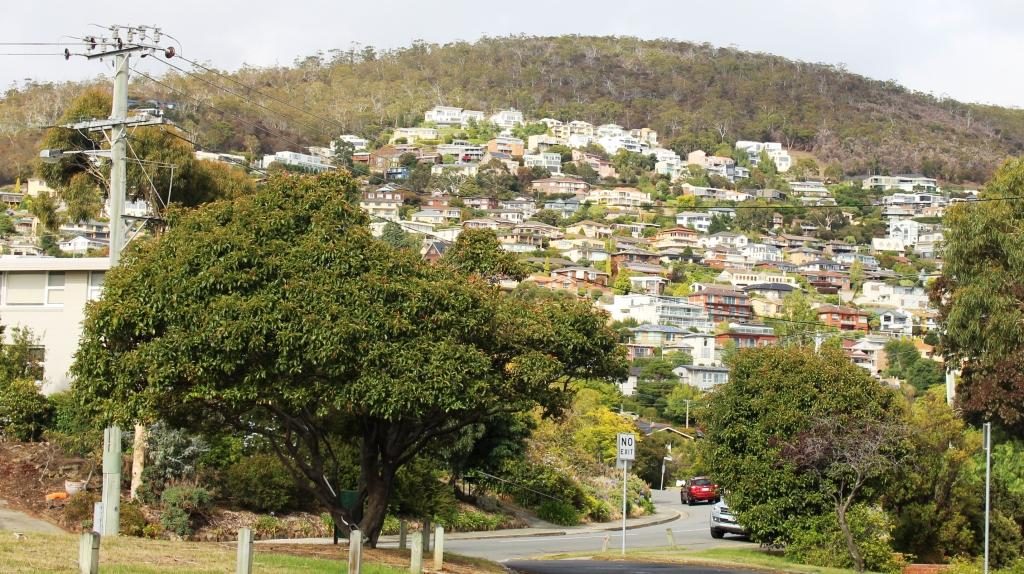

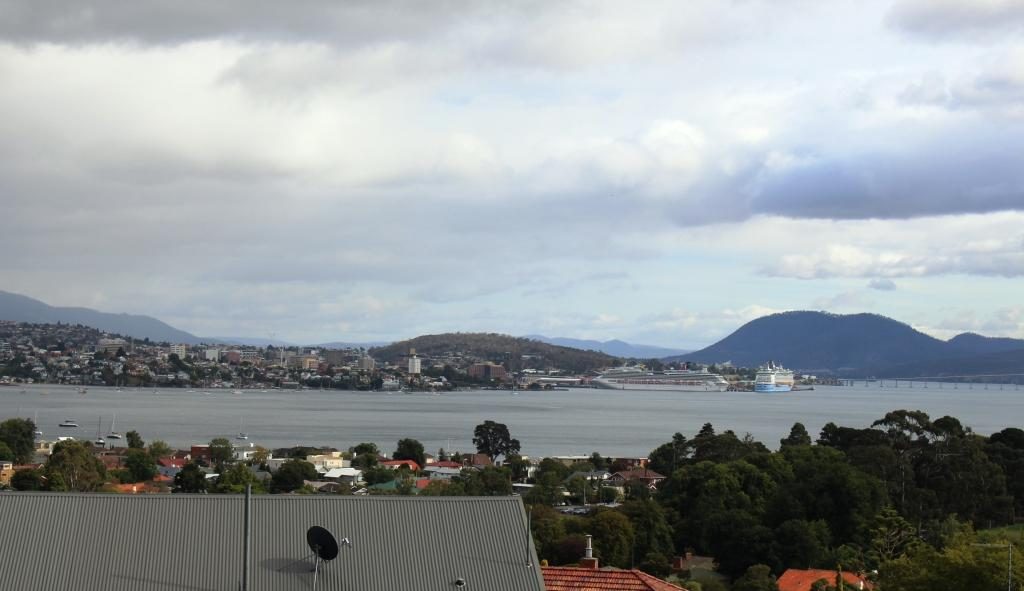
We then passed through Hobart, crossed the Tasman Bridge and made our way by an indirect route to Richmond, where we spent the night. It was on this drive that we came upon the little town of Campania to the north of Richmond, where we had lunch. The fare was home made pies and coffee, which we dealt with seated at a small table in the grocery/hardware/post office/coffee shop/service station.
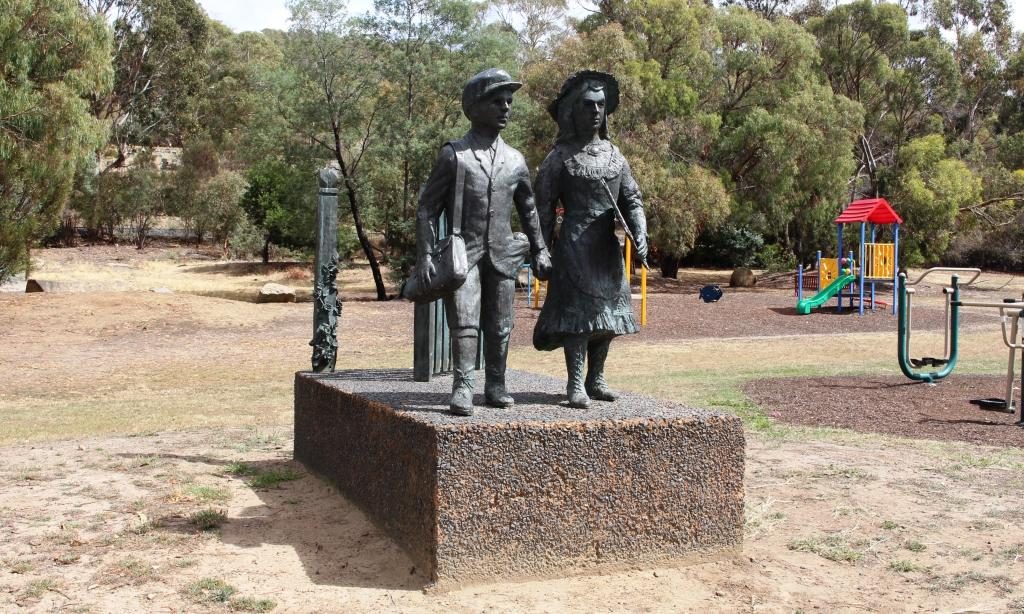
Our drive took us through areas of vineyards and fruit orchards, interspersed by broad areas of brown dead grass. The drought is about four years old in this part of Tasmania, but irrigation keeps the fruit and grapes growing. Some growers were busy placing white netting over their crops. I assume that the fruit was starting to ripen and birds needed to be kept at bay.
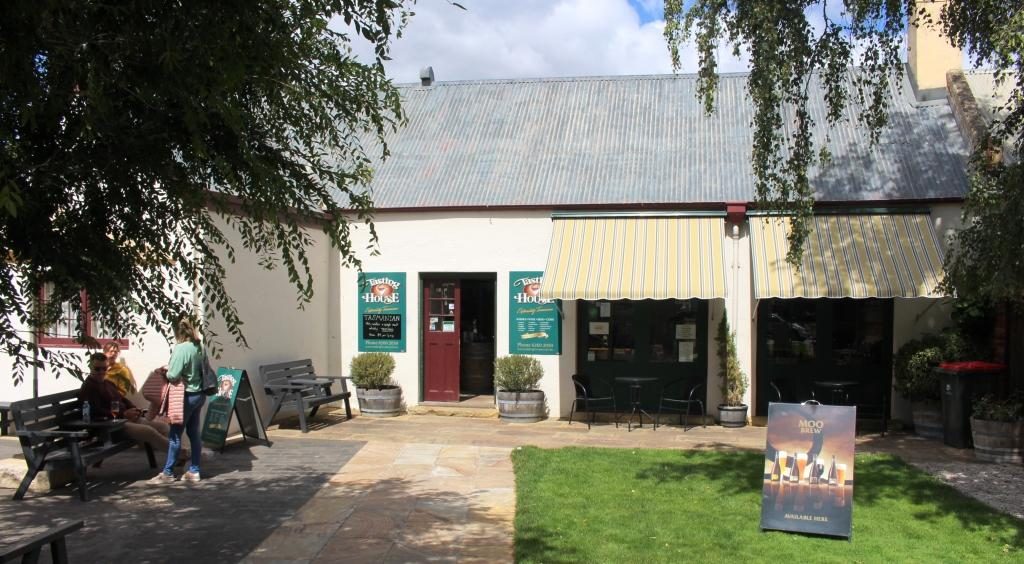
Had we come directly to Richmond we would have found plenty of places to have lunch. Historic buildings can be readily converted to purveyors of food and beverage.
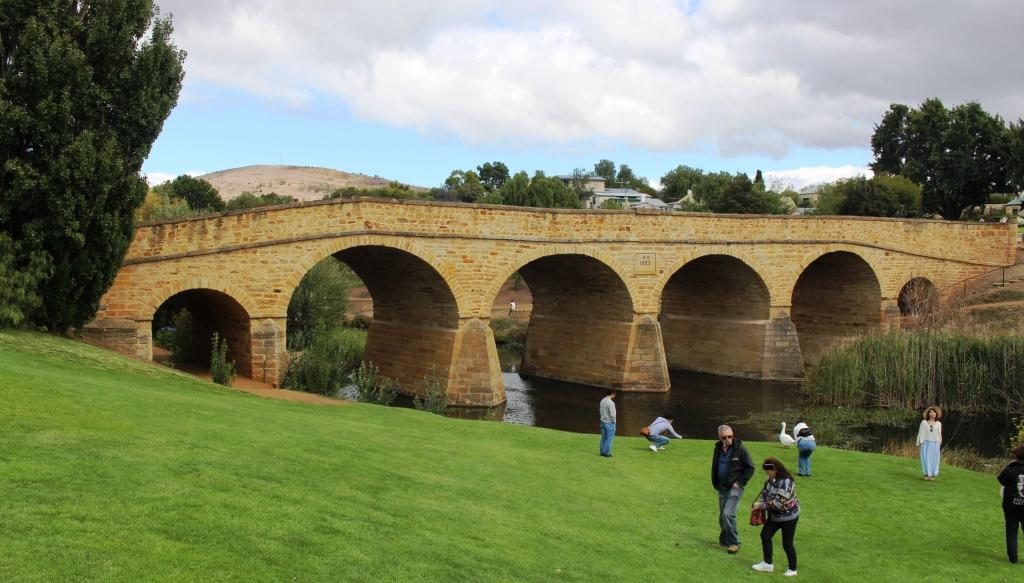


We took a look at Richmond’s historic bridge and walked, as well as drove, over it. We then looked in at St Johns Catholic Church (1836), just a short drive away, followed by a walk around the Richmond prison precinct.
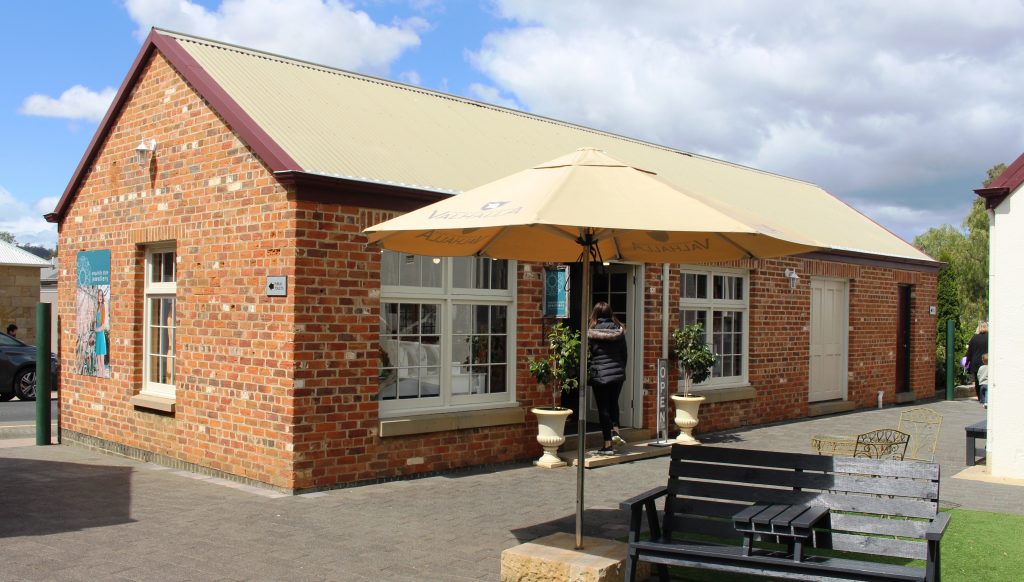
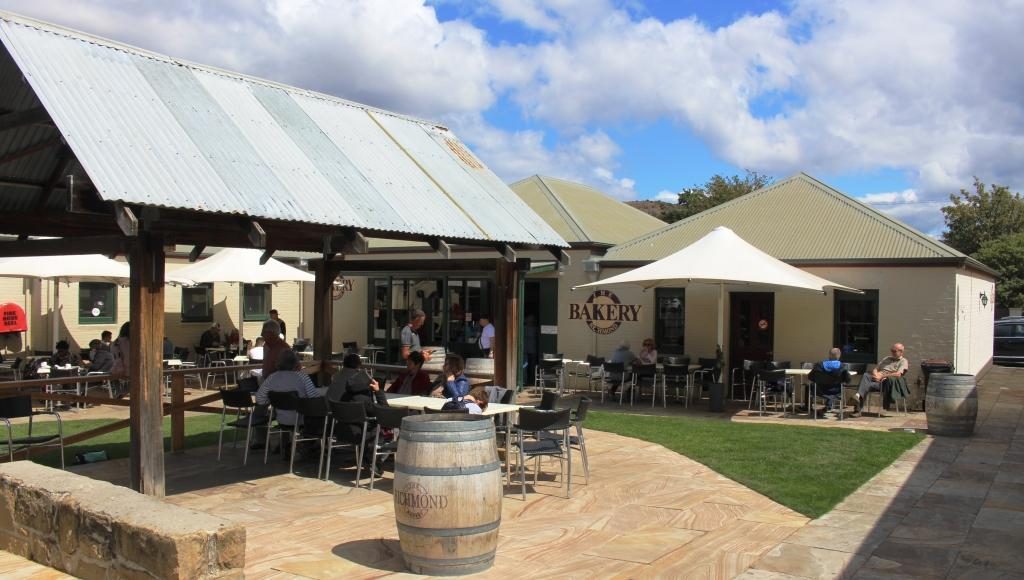
Ruth was beginning to be walked out so we checked into our accommodation. I returned to the historic precinct on foot and walked and looked and read and took photos. St Lukes Anglican Church is through the town on the other side of the river and a bit of a walk so it marked my turning point to return to the town area.
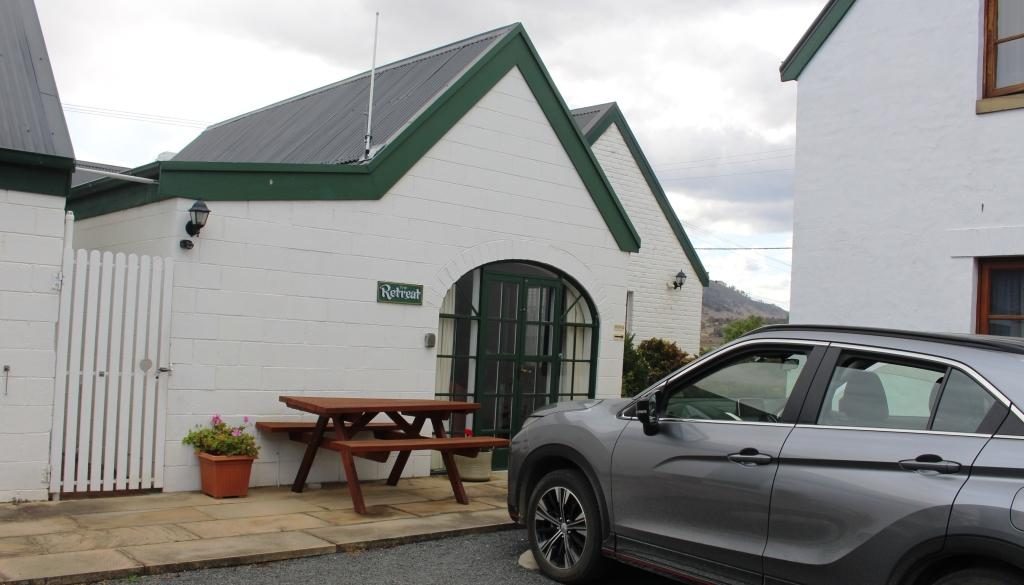
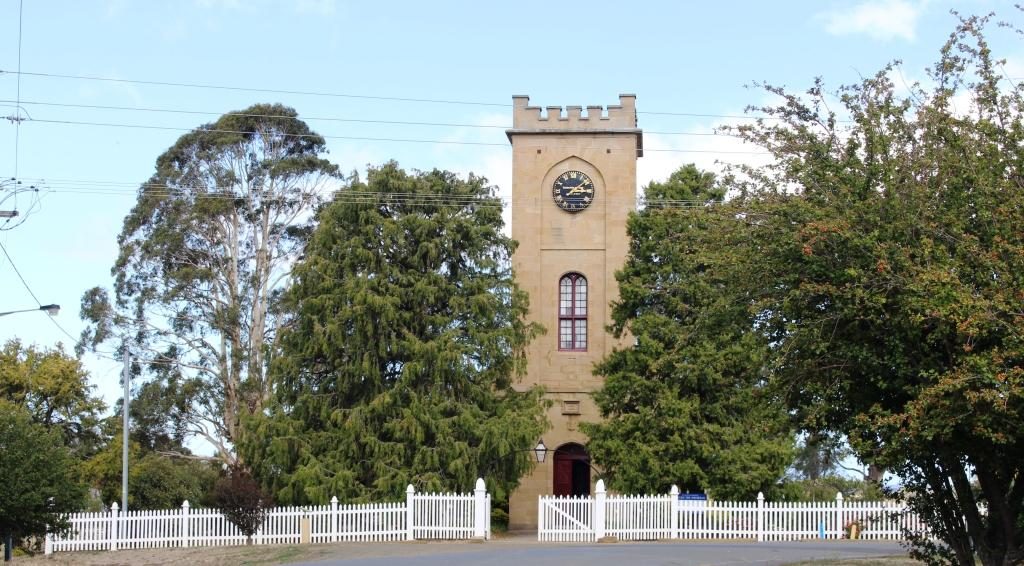
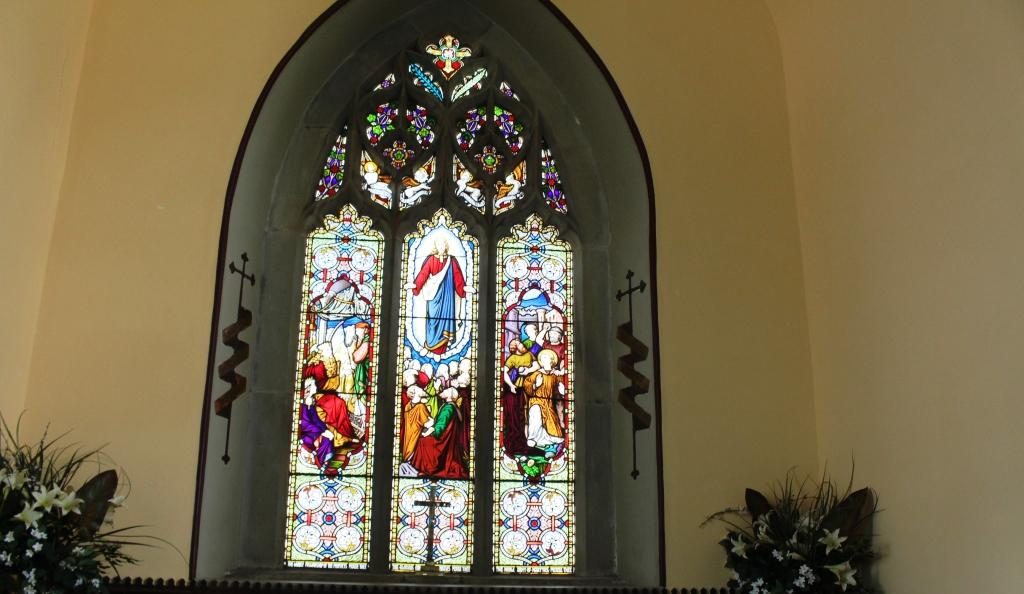
Richmond has a prison precinct that has been very well restored, with excellent use made of the old facilities. The prison itself remains largely unchanged and tours are available. As we were headed to Port Arthur the next day we didn’t tour the Richmond Prison. There are eating places within the prison area including a cafe in the original bakery.
By the time that I had covered this area I was walked out too, so returned to the unit to put my feet up for a while. Our accommodation was at The Barracks, small group of holiday units resulting from the renovation of old buildings. Very comfortable and well appointed.
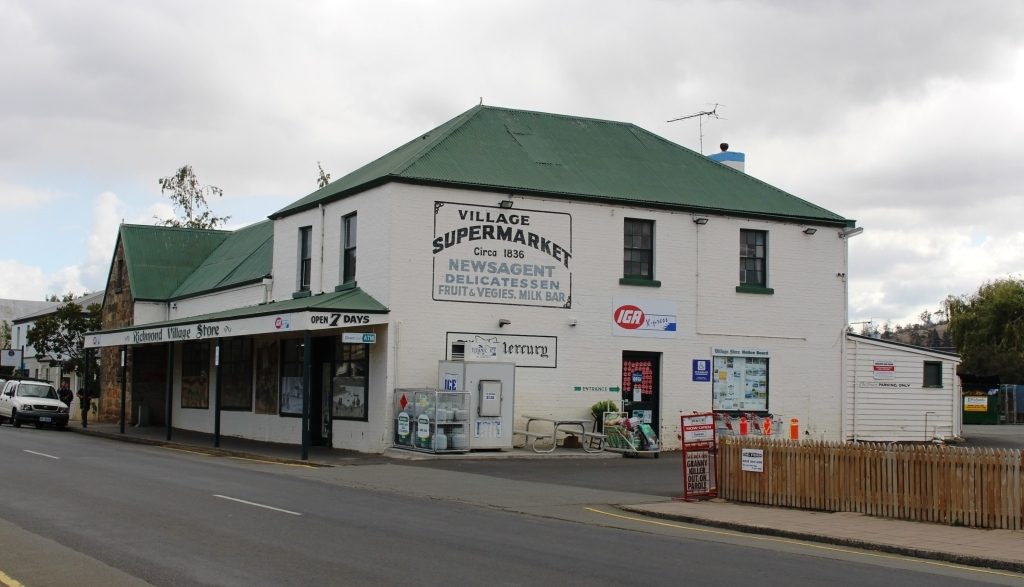
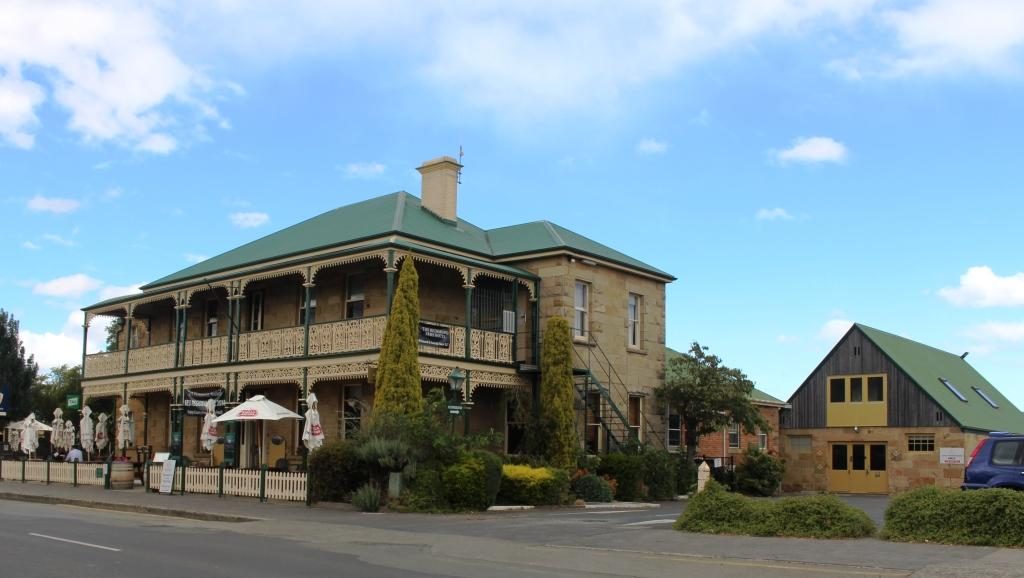
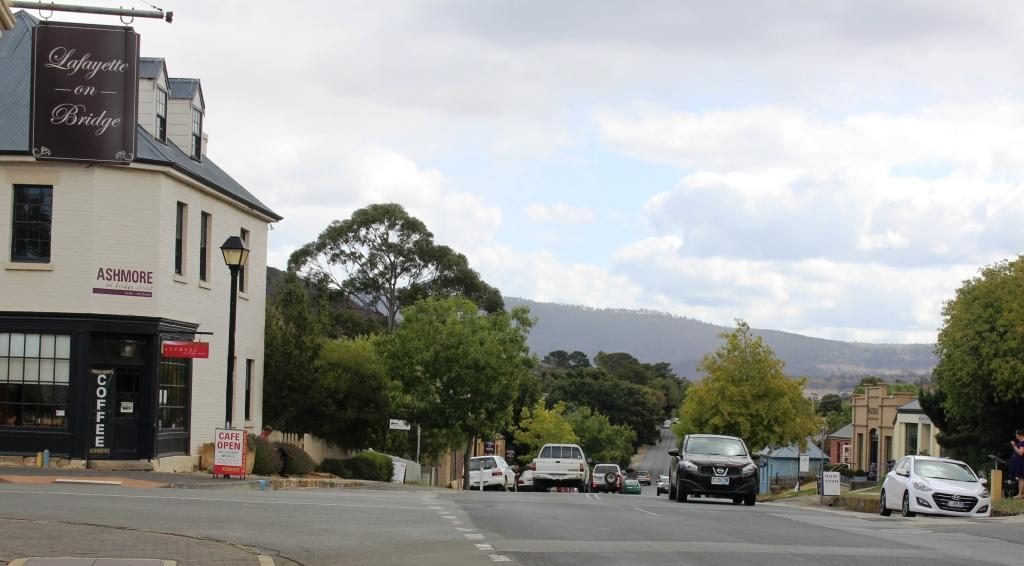
The following morning we left Richmond for Port Arthur under clear blue skies which remained, with a few clouds around the edges, for the rest of the day.
As we neared our destination we stopped to look at some touristy things. At Dunalley we checked out the canal that provides a short cut for smaller boats between Hobart and the east coast and it’s lift bridge. It seems to open on request from the passage making boat. This channel is quite short. The land to the south is almost an island. The protruding section of land that links the Tasman Peninsula to the Tasmanian main land is called the Forestier Peninsula.
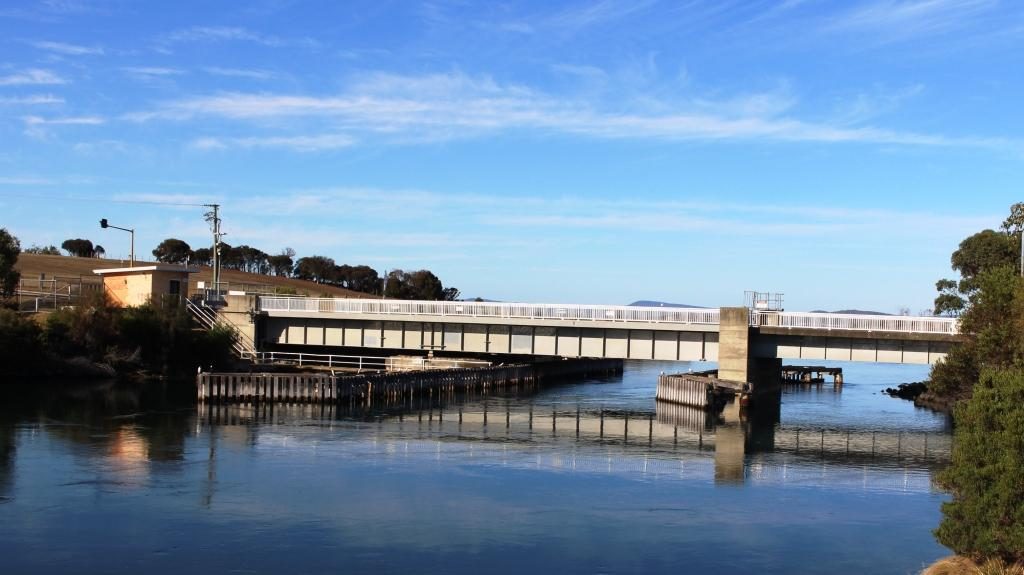
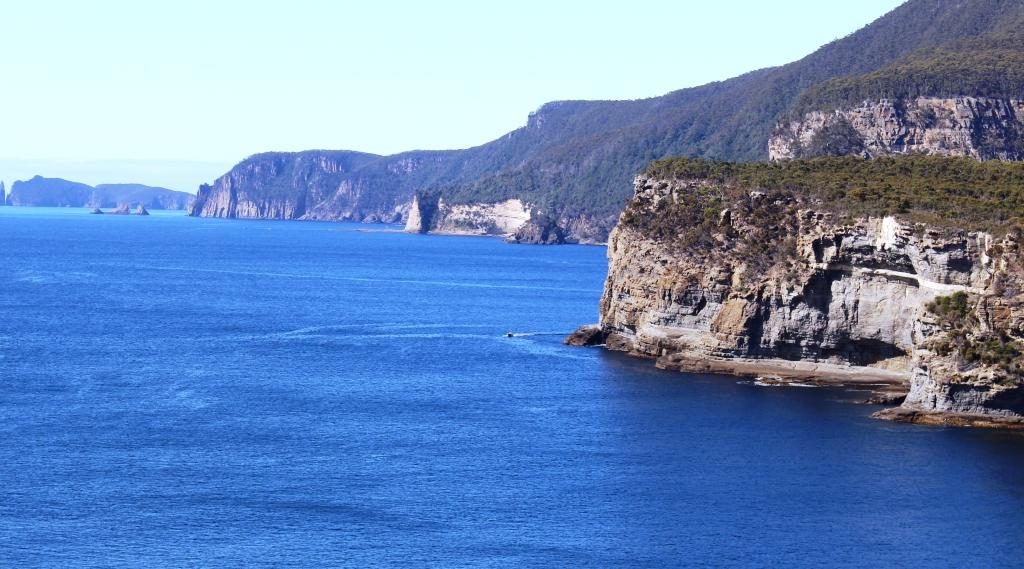
At Eaglehawk Neck, about 20 km further south, the same geographic phenomenon repeats, with Eaglehawk Bay, a long thin inlet from the west, almost joining the ocean at a short and narrow isthmus that leads to the Tasman Peninsula.
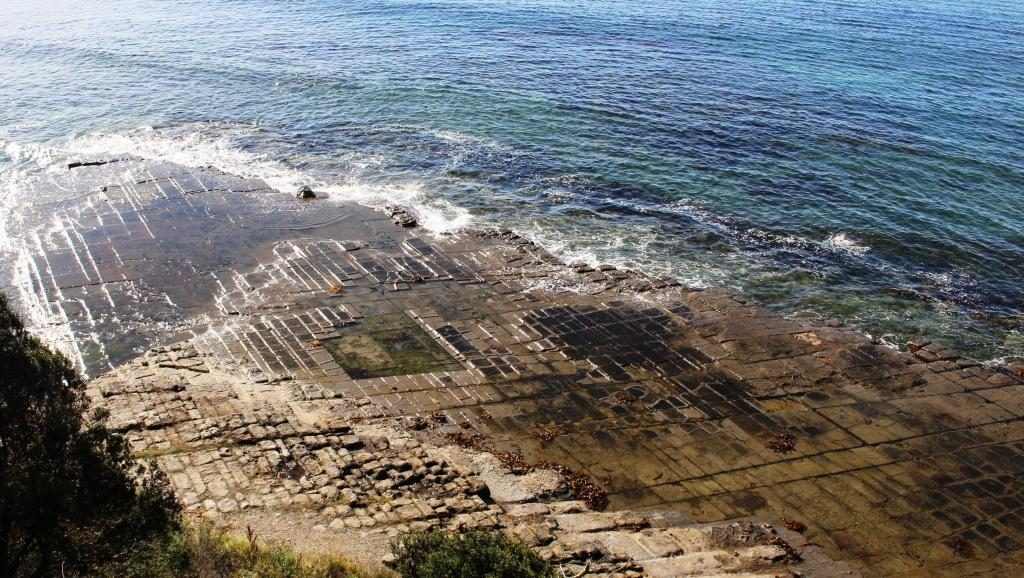
The Tessellated Pavement is reached from a road that turns just before the decent to Eaglehawk Neck, at the end of a drive of about 5 km. It is in the form of a broad shelf of rock that looks like an area of cobble stones.
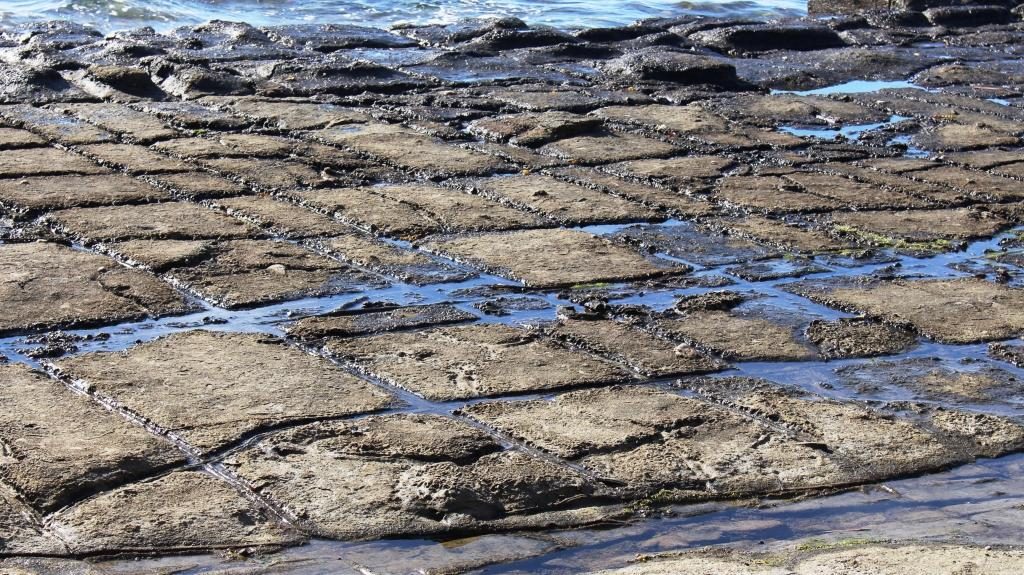
Tasman Arch and the Devil’s Kitchen are reached by a road that turns to the east after crossing Eaglehawk Neck and follows the ocean coast for another 5 km. The tide was low and the sea flat calm so there was nothing cooking in that kitchen. Because of the calm seas we didn’t worry about the near by blow hole. There would have been nothing to see there.

Tasman Arch is best viewed from the water and that was probably how it was first discovered. The view from the land is courtesy of a sink hole that is large enough to allow a reasonable view.
The road to Port Arthur turns west along the southern shore of Eaglehawk Bay for a while and then turns inland and runs across the eastern part of the peninsula to Port Arthur.
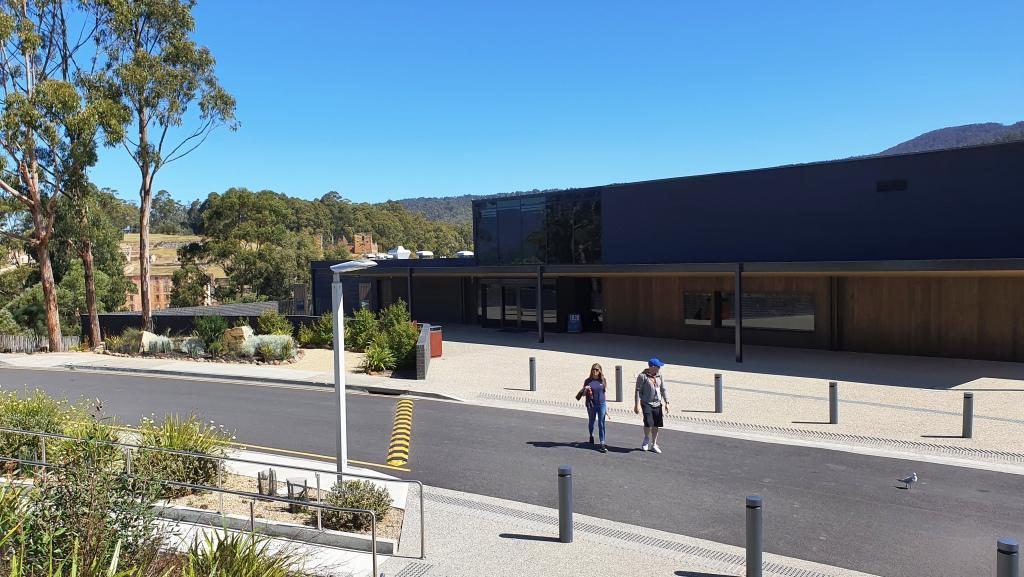
We were last at Port Arthur about 45 years ago. The changes are significant. One of the most important is the huge visitor information centre with it’s displays, cafe, restaurant and the ability to handle large numbers of people. Port Arthur is a very popular attraction and included on most package tours to Tasmania’s south.


Forty five years ago the portion of the convict prison open to the public was much smaller than it is today. The admission ticket ($32.00 each for seniors) allows two days to see it all. An historical enthusiast would easily spend that much time if they stopped to read all the signs and study the exhibits. We had but one day and ageing legs. We covered the main penitentiary building and the area furthest from the water, where the separate prison and the asylum are located. We then joined a cruise on Mason Cove and the port of Port Arthur. The cruise is included in the ticketed cost.
The cruise passes the old ship construction slipways, the site of the now nonexistent boys’ prison and the Island of the Dead, the penitentiary cemetery. Visitors may land on the island and be picked up by the next tour boat. We stayed on board and completed the tour before going back to the visitor centre for lunch.
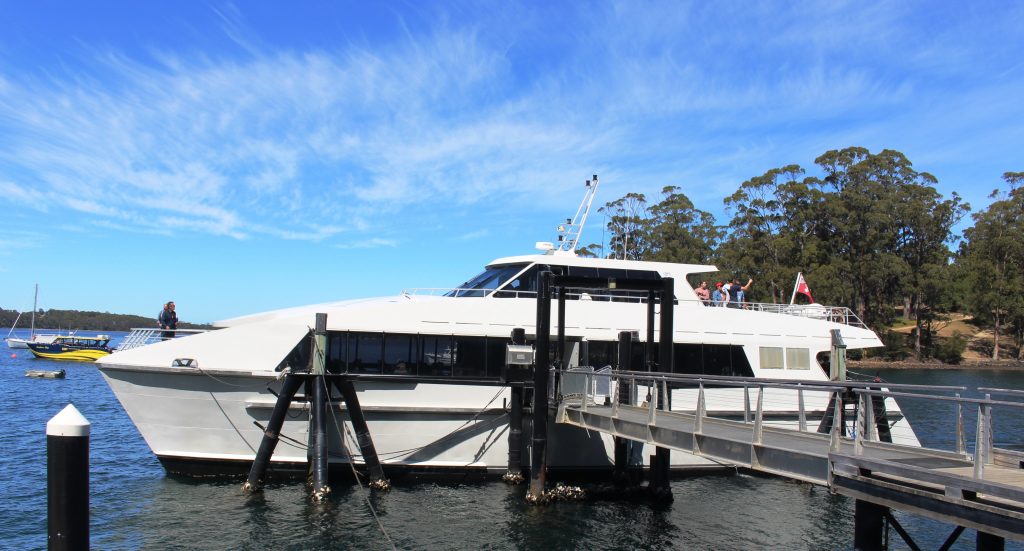
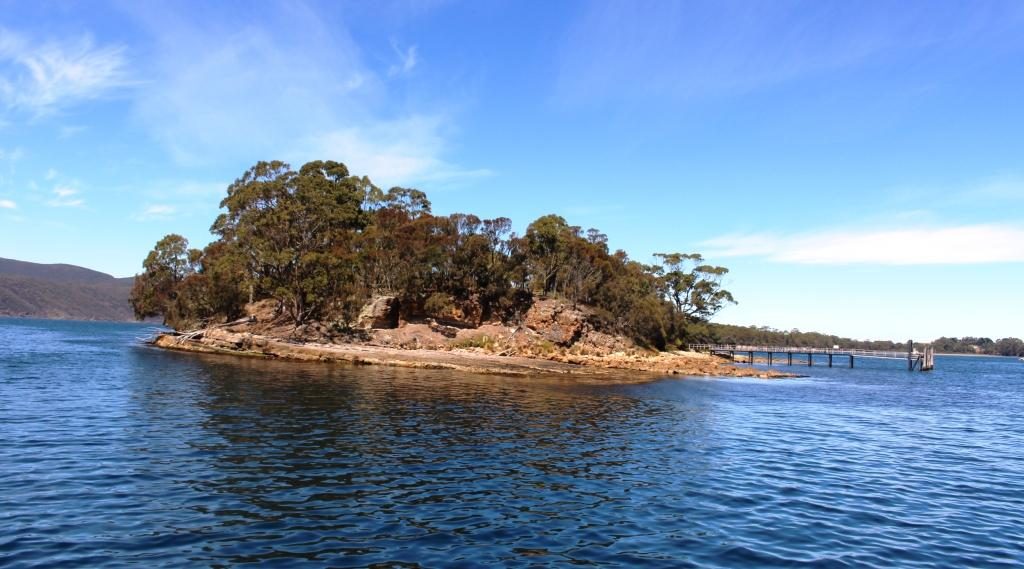
Tour guides tend to emphasise the cruelty to which inmates were subjected, but it happened over 150 years ago and was not abnormal for those times. The intention was to rehabilitate as well as punish. During the life of Port Arthur as a convict settlement, methods changed when existing practices were found not to be working. Unfortunately they were often replaced by something else that didn’t work. Rehabilitation of errant humans is not easy. Western society still has not got it right if re offending rates are any indication.


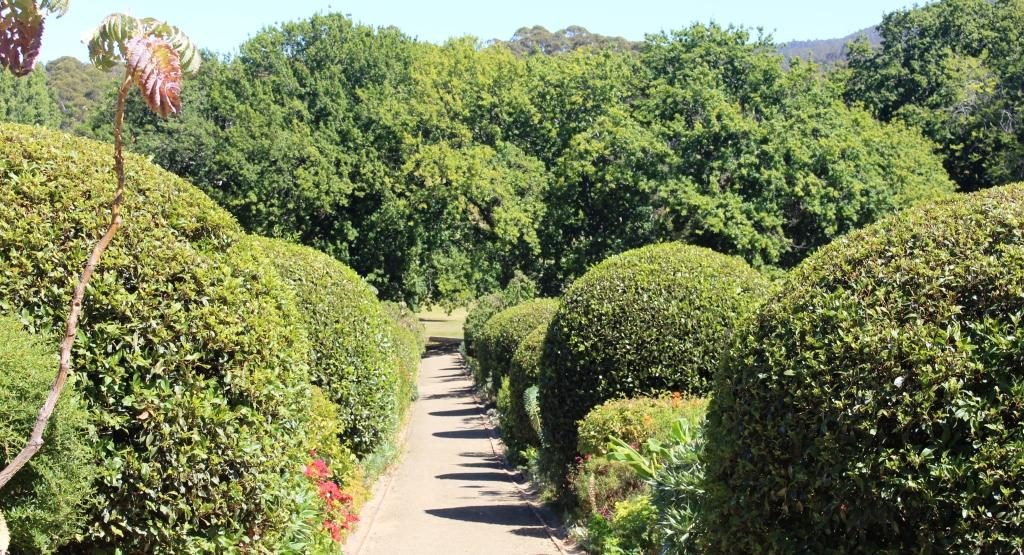
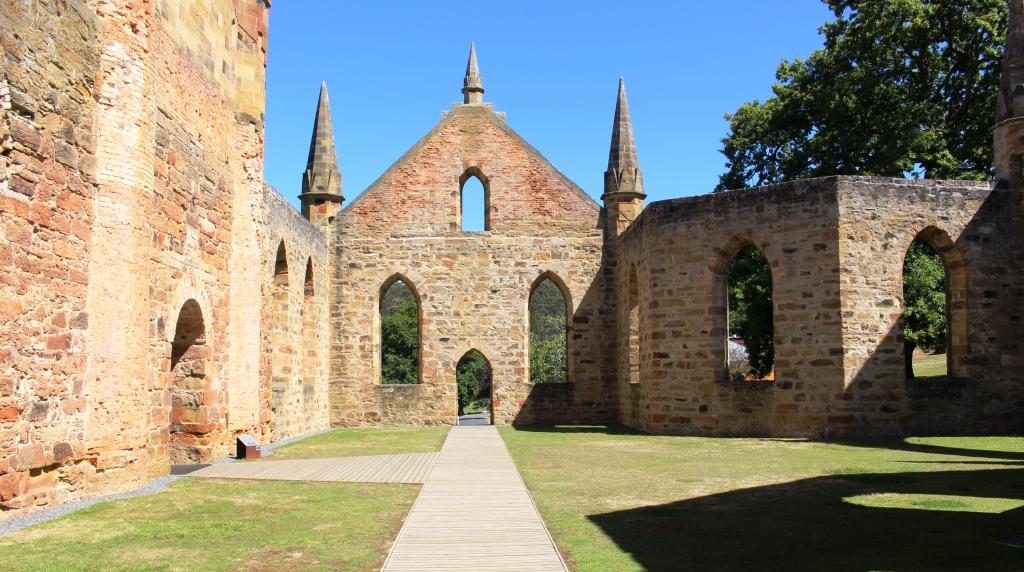
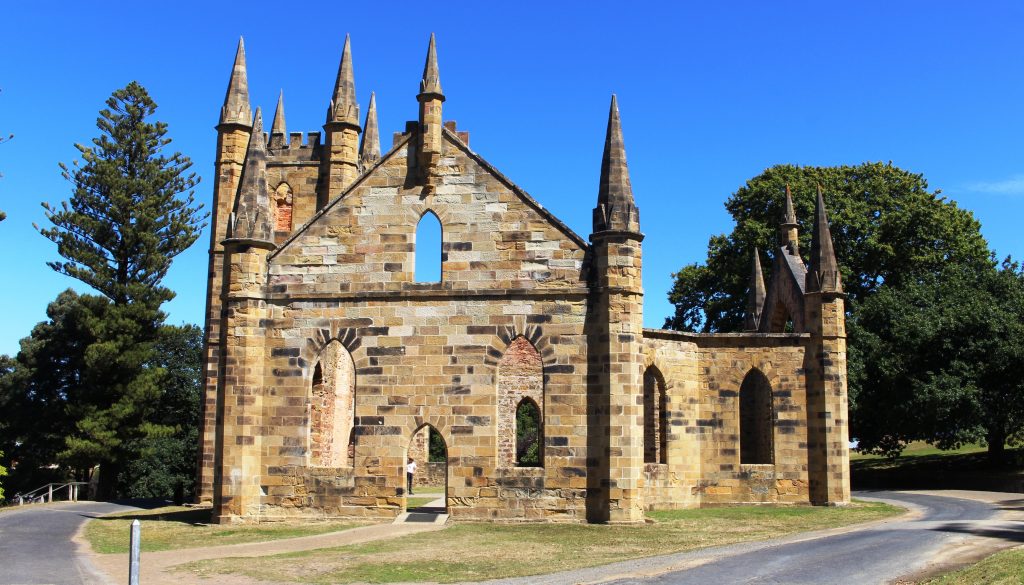
Ruth was done with walking so stayed at the visitor centre while I went back to walk through some other areas. I did the garden and the government cottages, the ruins of the church and had a closer look at the Separate Prison (where prisoners were known by a number and lived in solitary confinement), and the Asylum (needed for all the prisoners who went mad from solitary confinement).
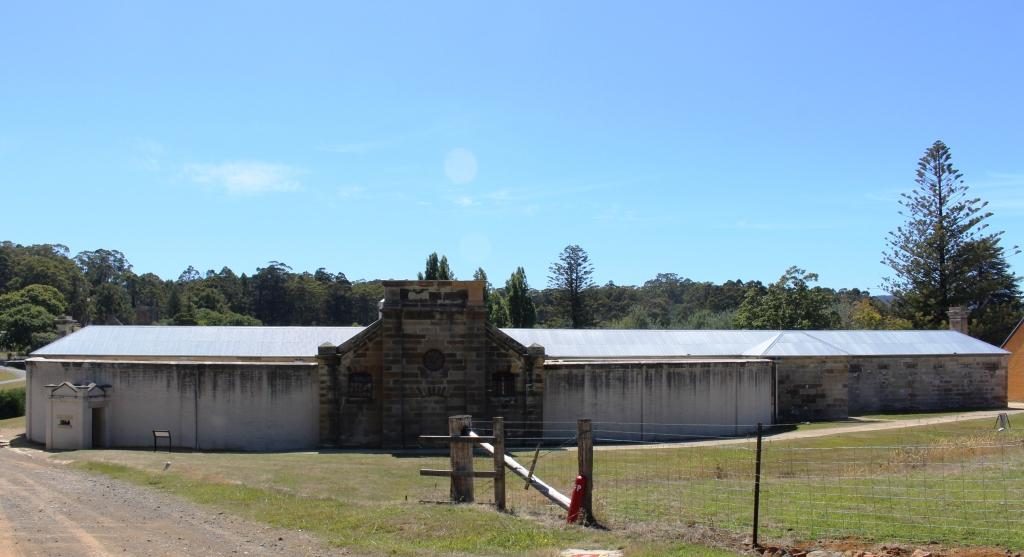
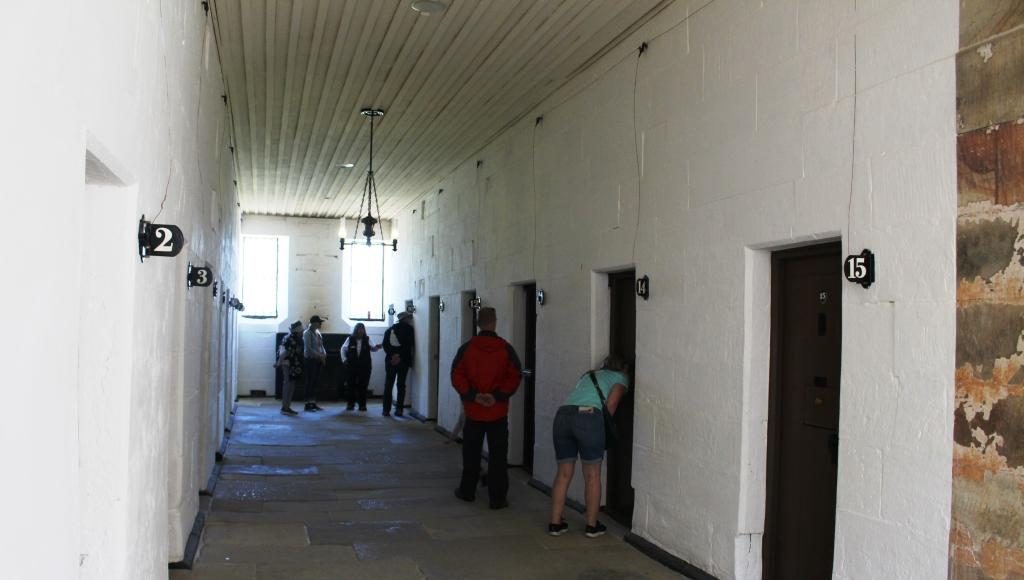
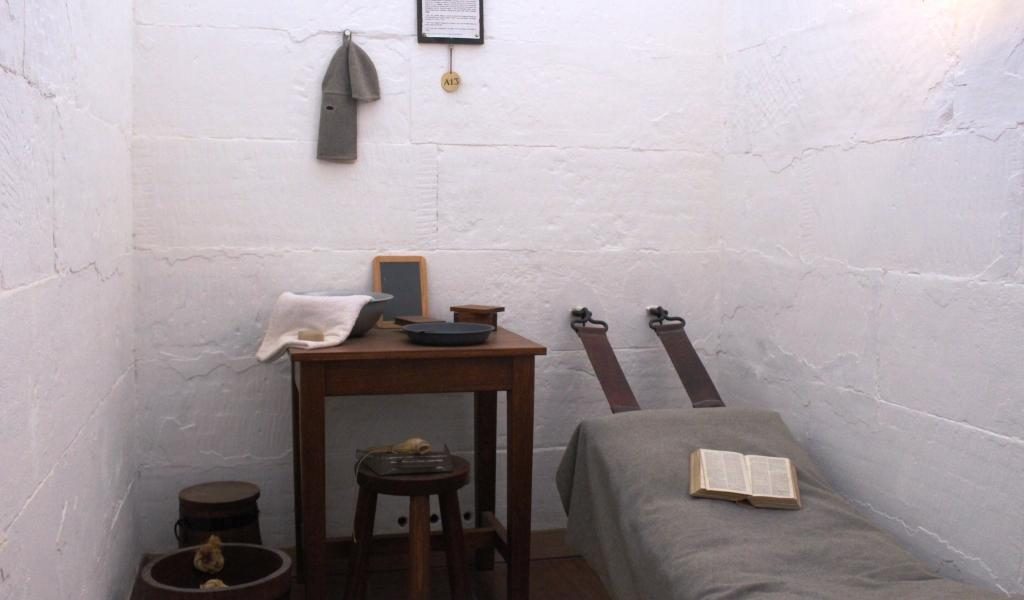
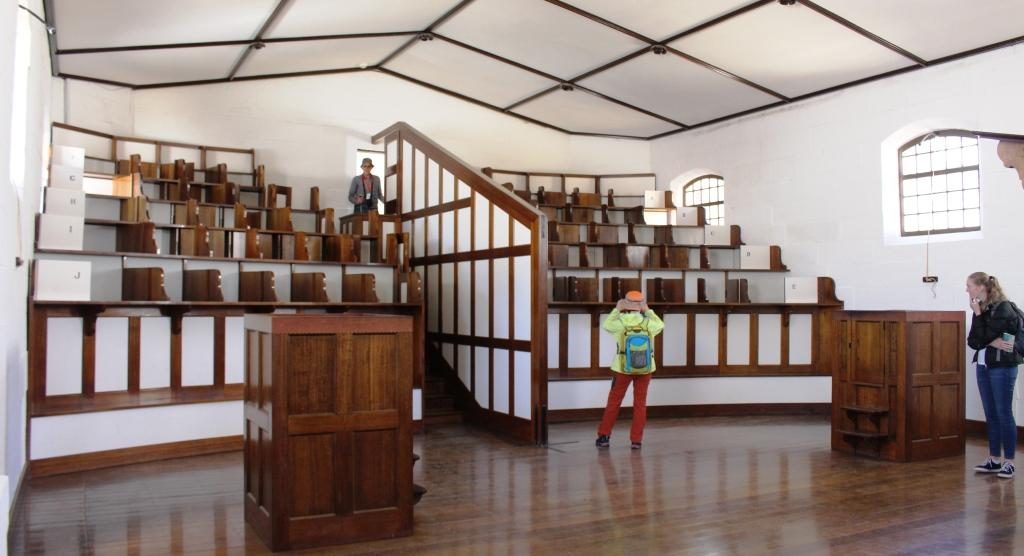
I then climbed through the ruins of the hospital, the guard tower and military accommodation areas, the commandant’s house and finally a detailed walk through the penitentiary. Quite a bit of walking.
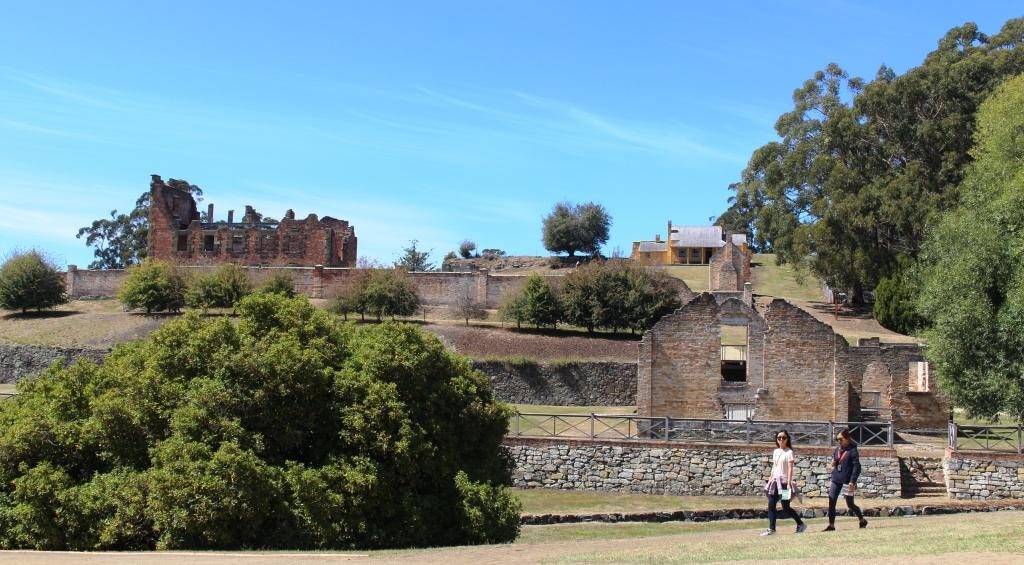
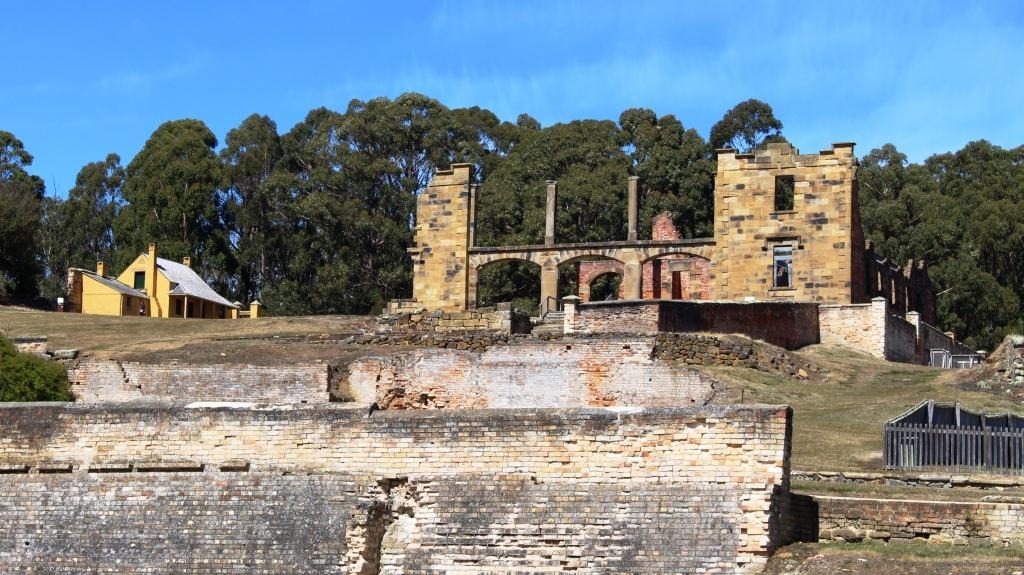
Ruins of the guard tower and the military accommodation remain sufficiently intact to give a good idea of what was there originally. The court house is in the same vicinity, straight across the street from the penitentiary, the place from which most prisoners would be brought to appear before a magistrate and the place to which they would be returned, but possibly to a different section, depending on the sentence.
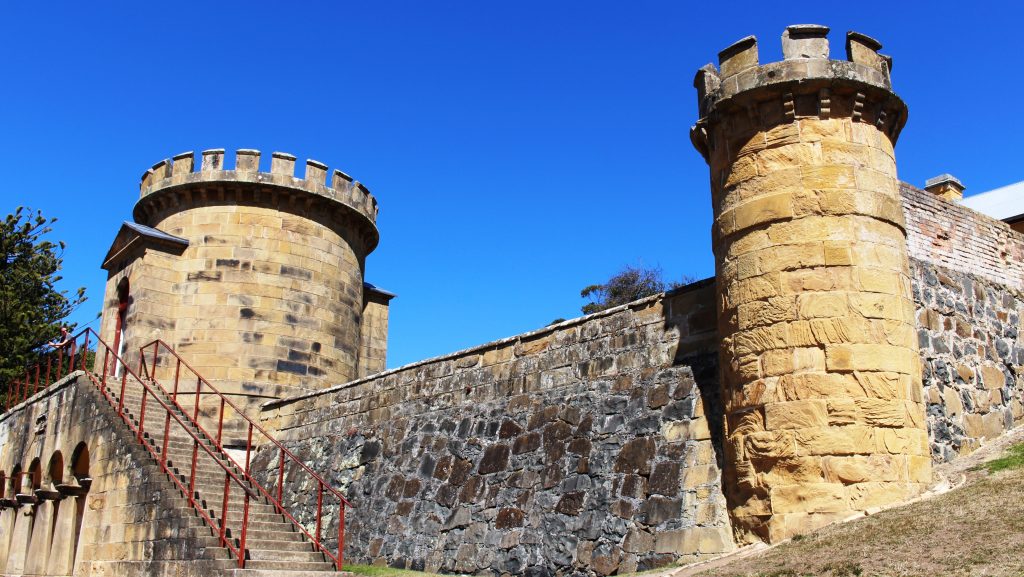
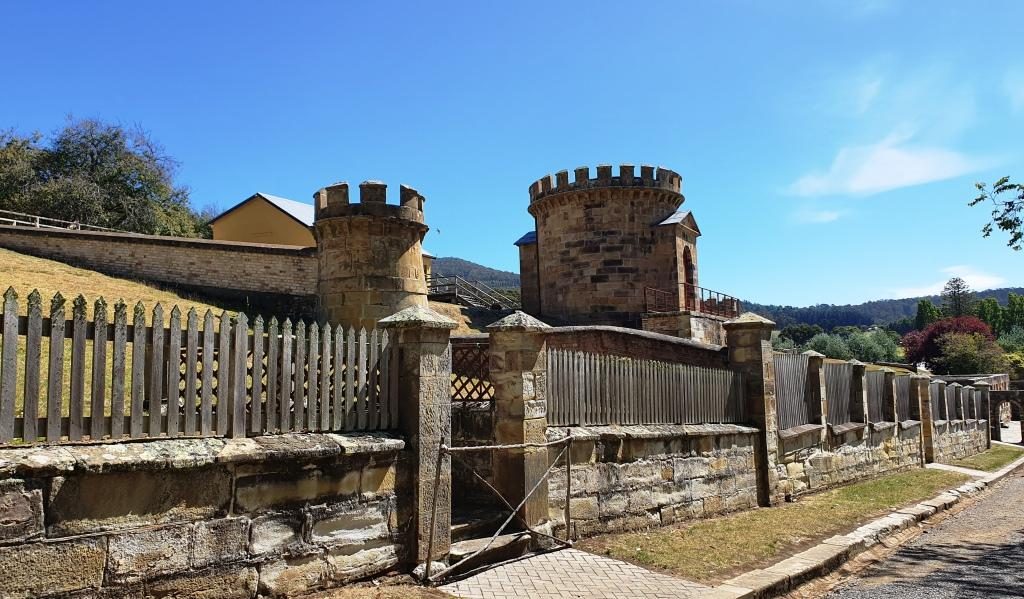
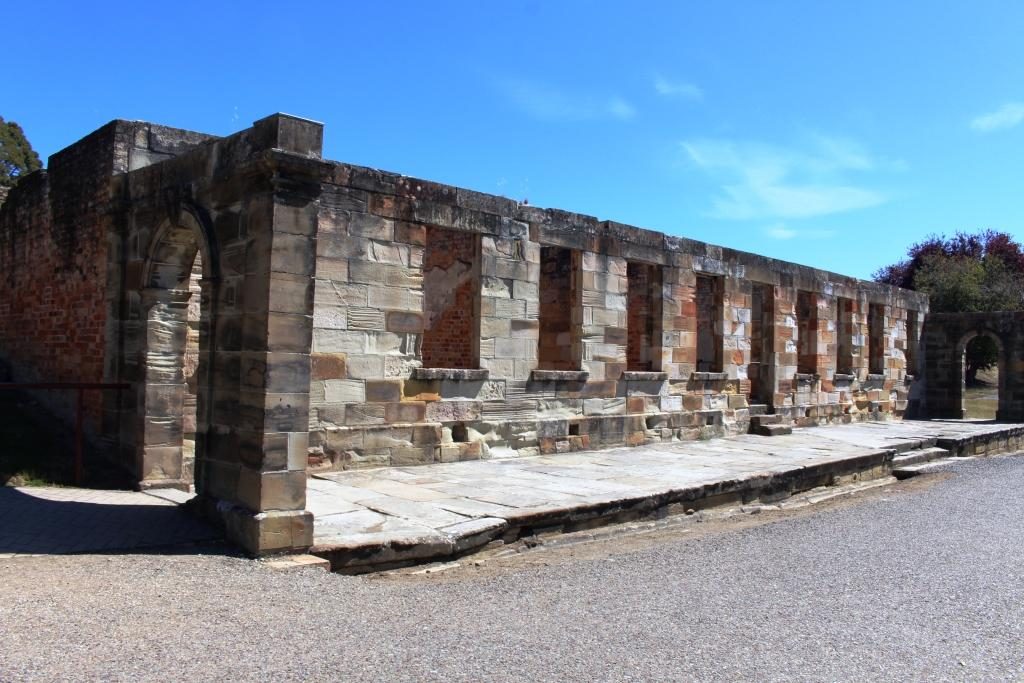
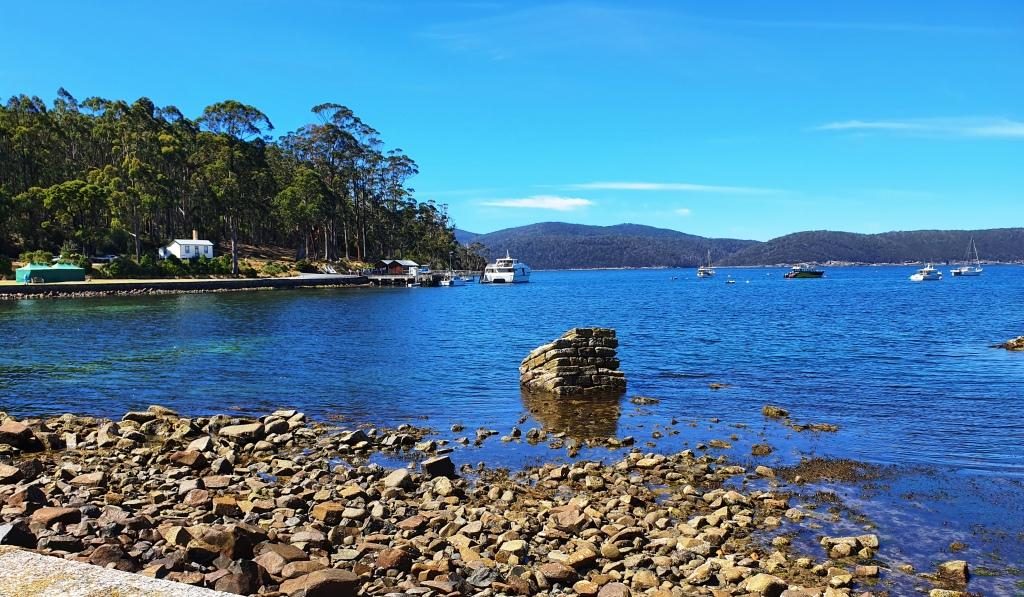
The commandant’s house contains furniture that is either original or represents the period. Many rooms are set up as they would have been when occupied by it’s residents. Other rooms contain displays, rather like a museum. There is a display of information signs providing details of commandants, governors and other figures of authority.
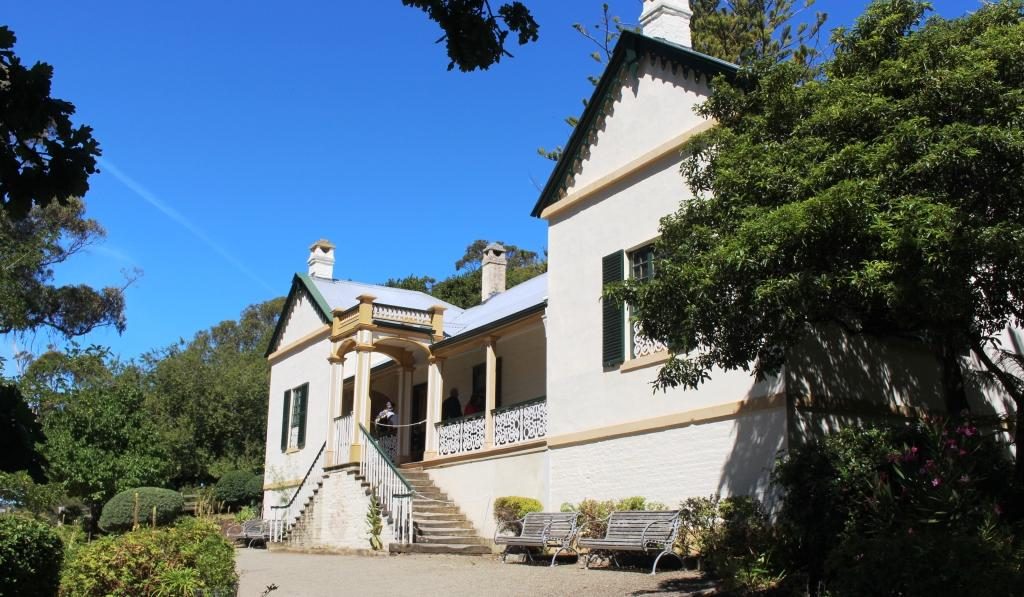
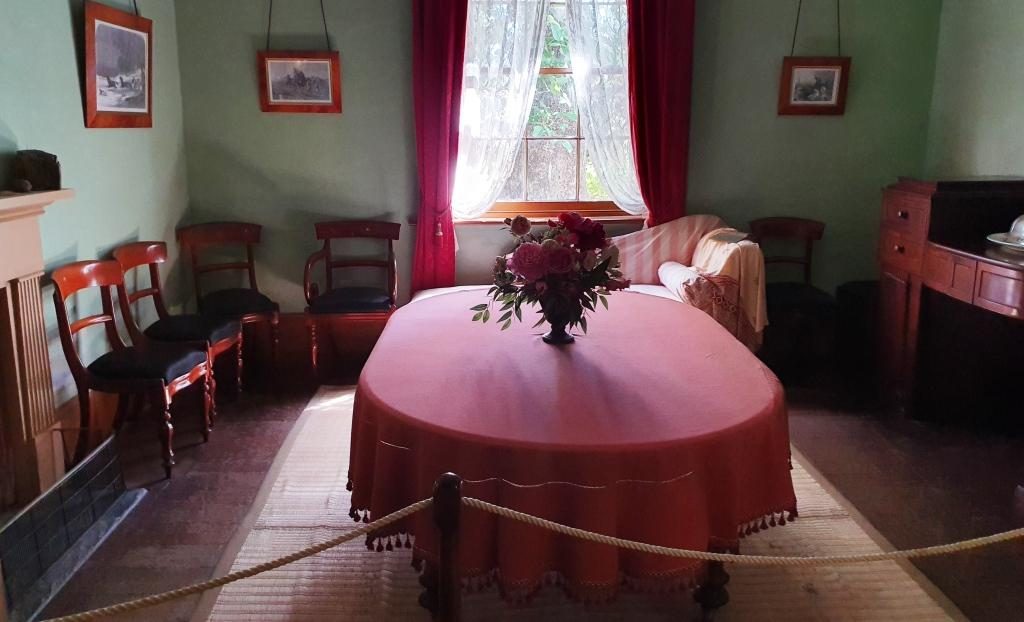
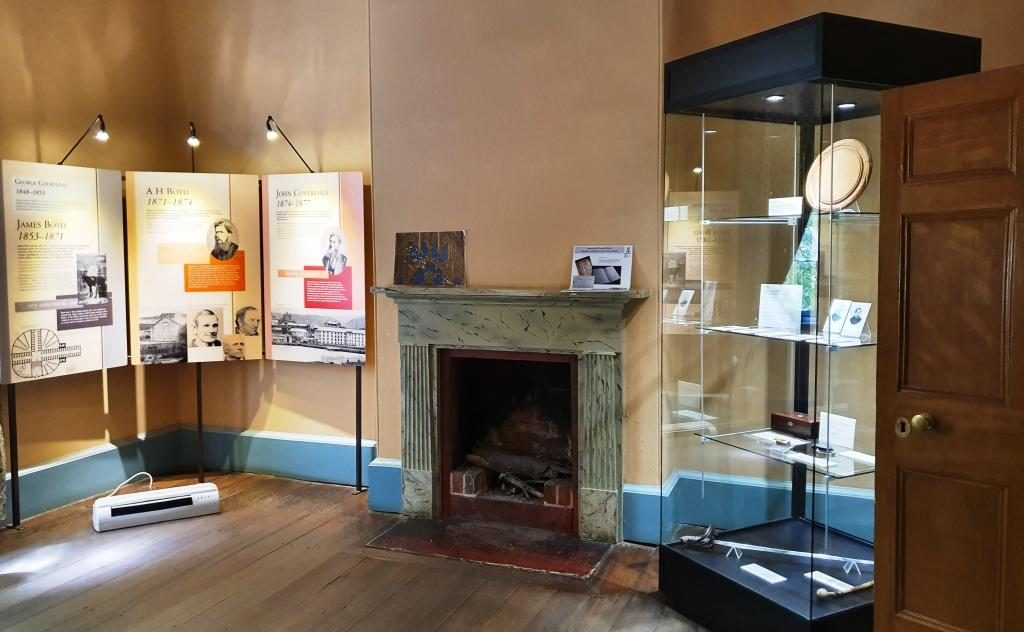
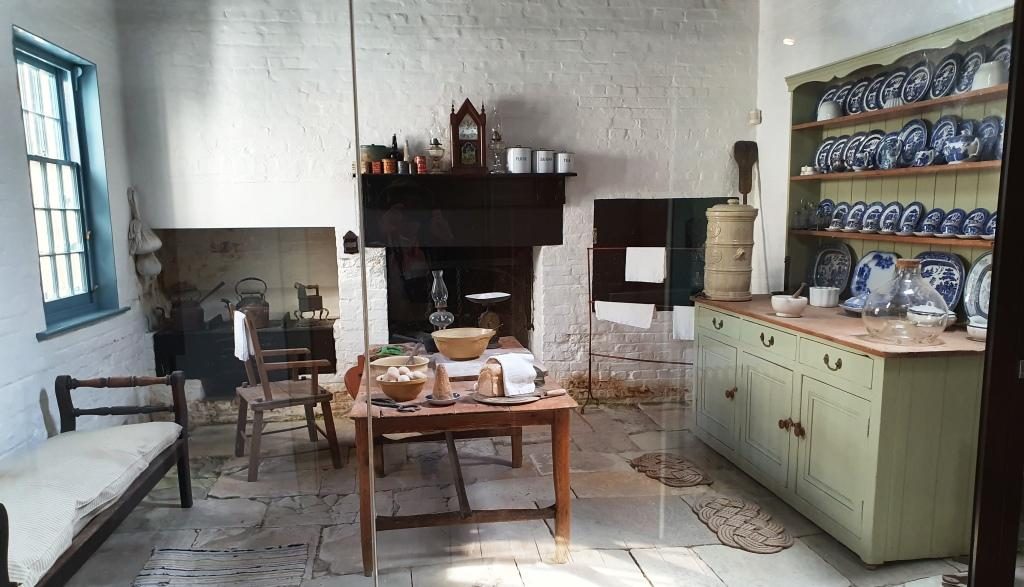
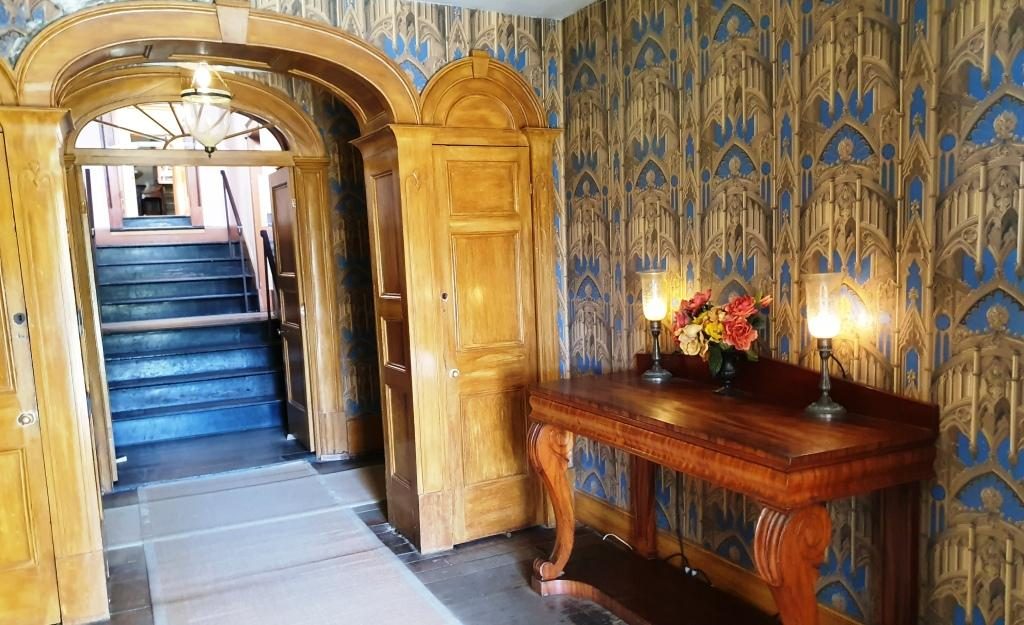
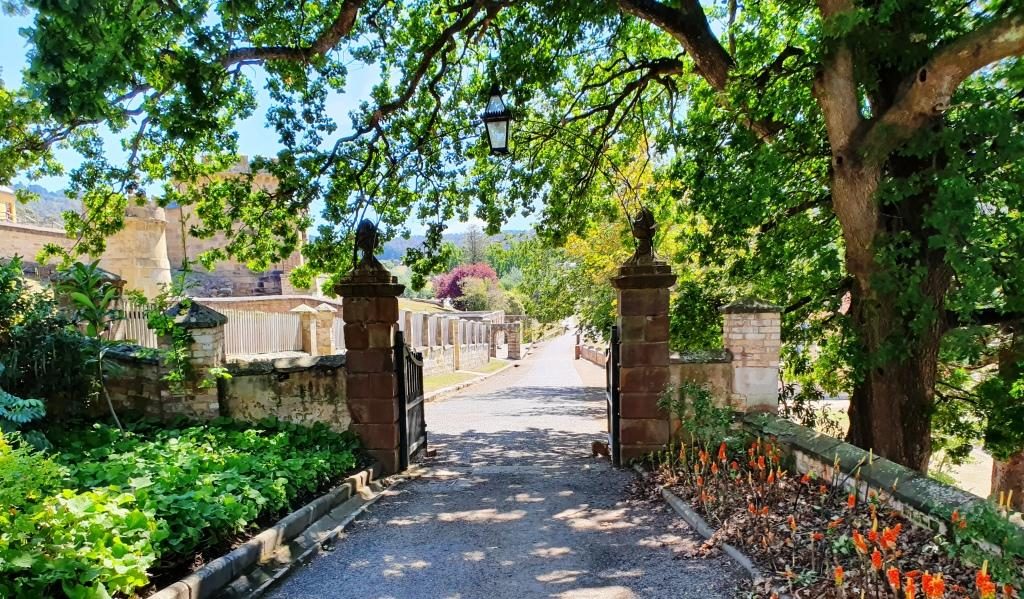
The penitentiary was built in 1845 as a flour mill and granary, with the flour mill powered by water wheels, or prisoner operated tread mills, when water flow was insufficient. To be assigned to the tread mill was one of the most harsh punishments available. You can just about imagine the convicts praying for rain.
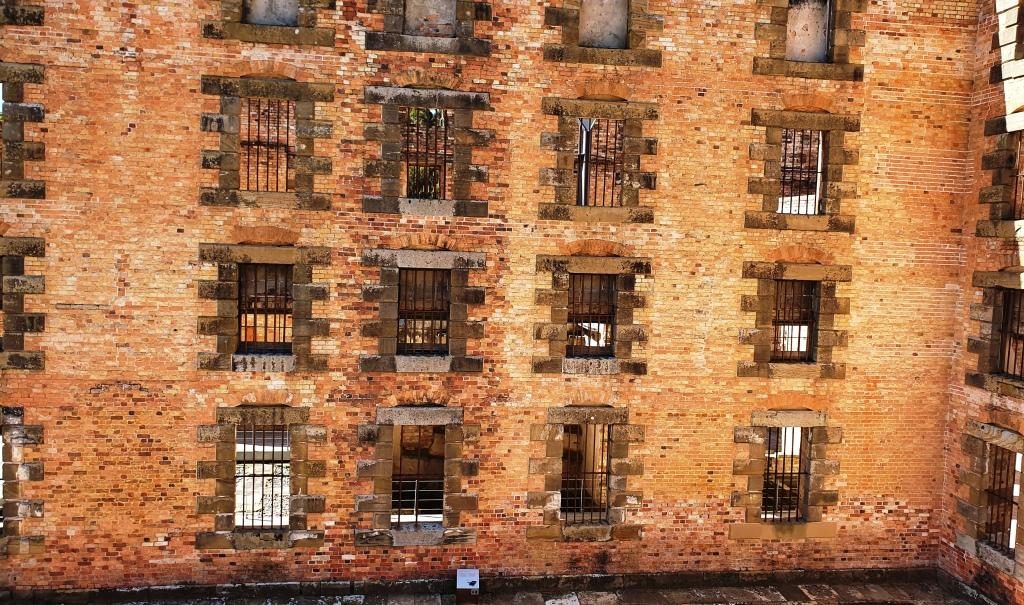

Competing demands for resources saw the flour mill closed in 1854. The building was converted to convict accommodation, completed in 1857. It was closed in 1877 and largely destroyed by fire in 1897. The ironwork that secures the outer walls that still stand is obvious and necessary.
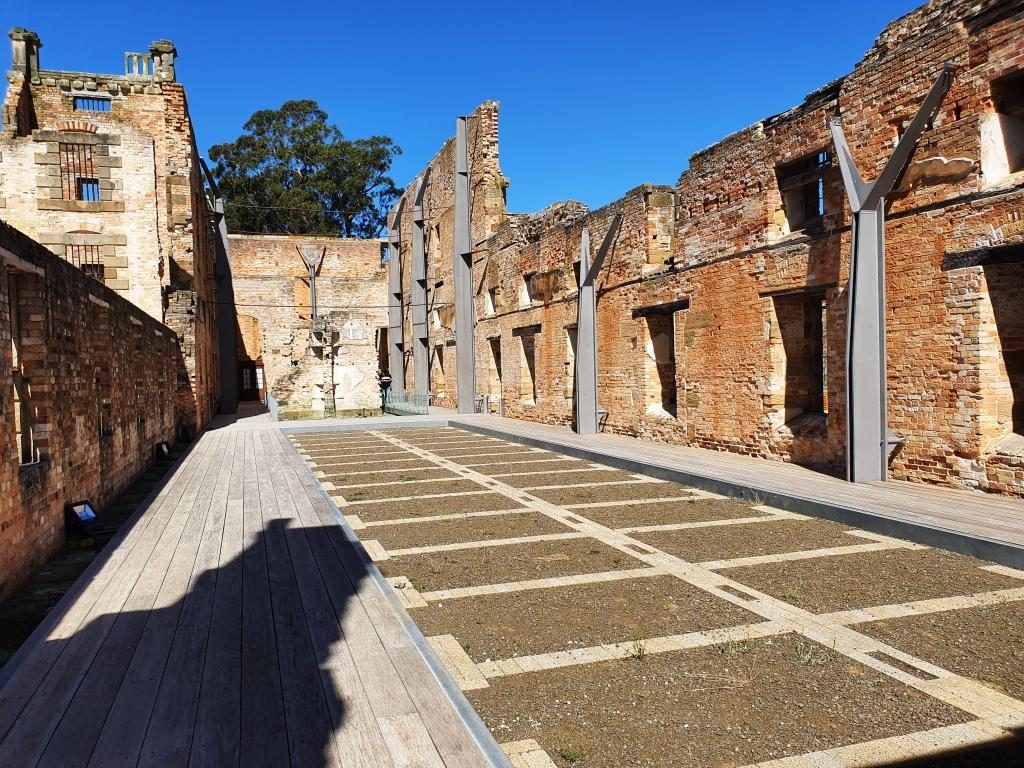
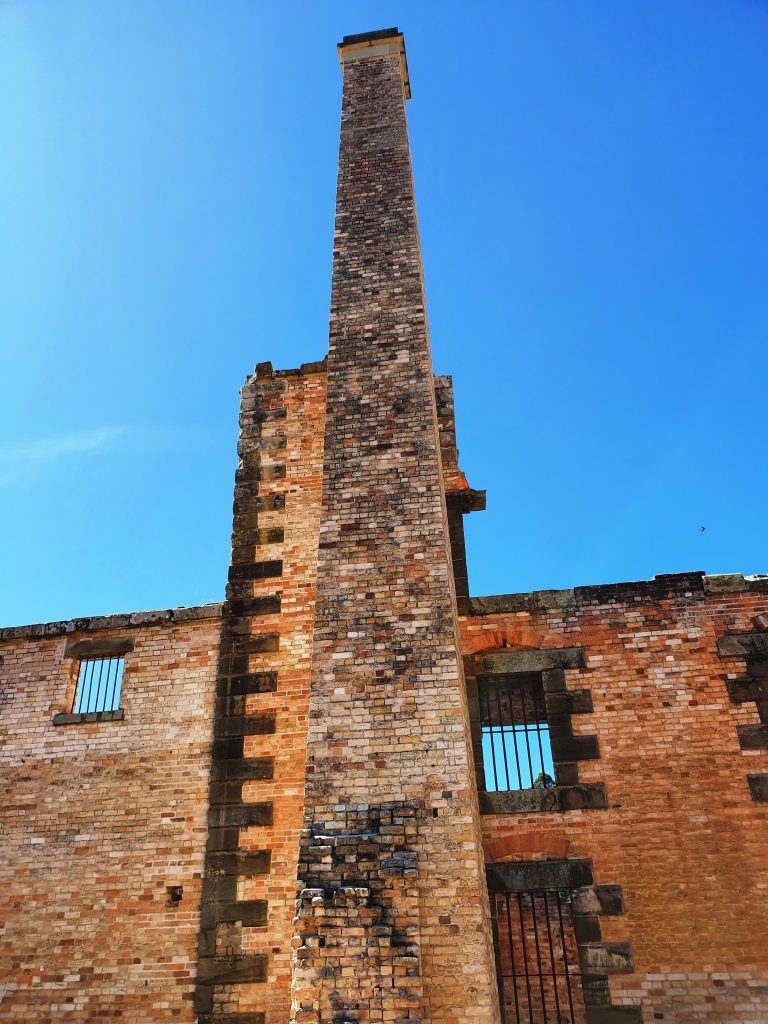
When you pay your entrance fee you are each given a card bearing the name and likeness of a person who was at Port Arthur. You then go downstairs to the gallery, find the likeness on a wall and pull out a panel to read the detail.

The character that I received was the accountant at the prison. Ruth got a character who, in England, lost his pension, threw a stone at the King, was charged with treason and transported. At Port Arthur he refused to do the King’s work or eat the King’s food so starved to death. As I walked I took particular notice of the accountant’s house.
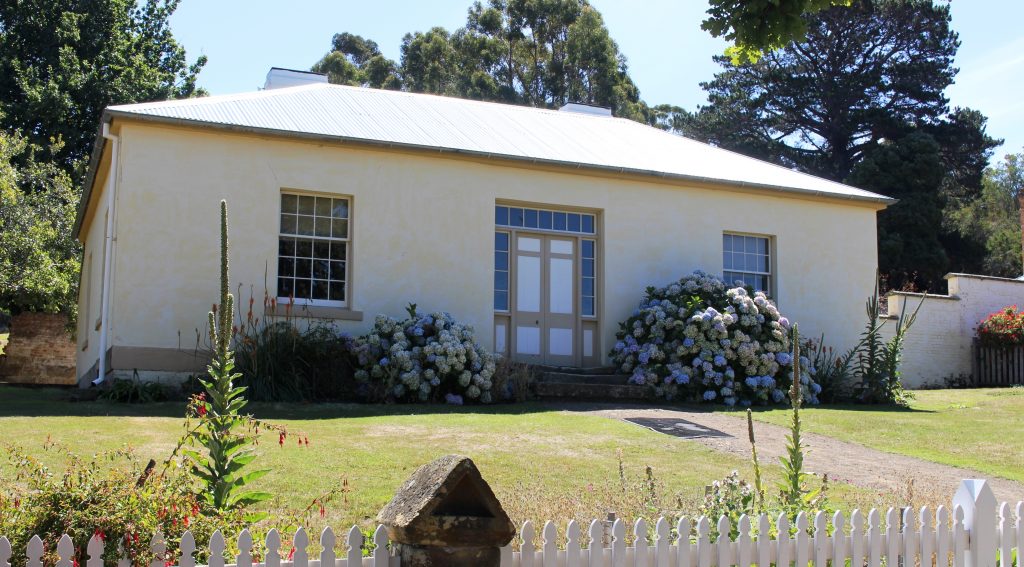
We were booked for the night at a place part way up the East Coast called Little Swanport. If I had realised how close we would be to Richmond on the drive we would have booked there for two nights. We wish we had done so.
We had done well with our accommodation arrangements so far but bombed out that night. The place was clean, tidy and comfortable, but inadequate. Windsong described itself as a B & B, but it was 5 km off the highway. The turn is near the community hall that calls itself Little Swanport and 15 km from the nearest source of nourishment. The host, Tom, who checked us in and told us to call if we needed anything had disappeared when I went to look for him to see if we could arrange an evening meal.
The table is set for a three course dinner, including wine glasses, but no stove or microwave to cook with or sink in which to wash our dishes and no tea towel to dry them. We had bread and food to make sandwiches, even a toaster, so we didn’t go hungry. But it did seem a bit odd. A continental breakfast was in the room for next morning.


